
What is Armagnac
.jpg)
What is Armagnac?
.jpg)
What is Armagnac?
copyright photo by L'Encantada
What exactly is Armagnac, you may ask? On this page, you'll read ALL about Armagnac.
For those unfamiliar, Armagnac is a type of brandy that originates from the Armagnac region of Gascony, located in the heart of Southwestern France. As lovers of French premium drinks, we at BonjourDrinks can tell you that Armagnac is France's first brandy, and is renowned for its complex aromas and long finish that is adored by true connoisseurs.
- What is Armagnac made of?
- Armagnac Region
- Growth Areas of Armagnac
- Armagnac vs. Cognac
- History of Armagnac
- Production process
- Additives in Armagnac
- Armagnac age categories
- The Taste of Armagnac
- Armagnacs in our shop
- Liquids based on Armagnac
- Armagnac Cocktails & Mixed Drinks
- What does Armagnac pair with
- FAQ
It is often compared to Cognac, which is its closest relative, but the two are quite distinct in terms of soil type, climate, grapes, distillation methods, aging techniques, and taste. The history of Armagnac dates back to Roman times, when the region was inhabited by various tribes that were conquered by the Romans. One of the soldiers, Hermann, was given a large piece of land in the region as a reward for his bravery. The territory was later named Hermanius, which was shortened to Arminius and then, over time, became Armagnac.
Today, the Armagnac region is a picturesque agricultural area that is famous for producing high-quality eau-de-vie, amongst many other things. The region's inhabitants are closely connected to the earth and depend on its products for their livelihood. While many small independent producers sell their product only at their domaines and do not export, they form the backbone of the Armagnac region and give it its unique soul.
At BonjourDrinks, we believe that Armagnac is one of the most beautiful eaux-de-vie in the world, and we're proud to offer a wide range of Armagnacs for the fine spirit connoisseur.
We're committed to giving these small independent producers a voice in a marketplace that is often dominated by mediocre commercial products that do nothing to enhance the image of Armagnac.
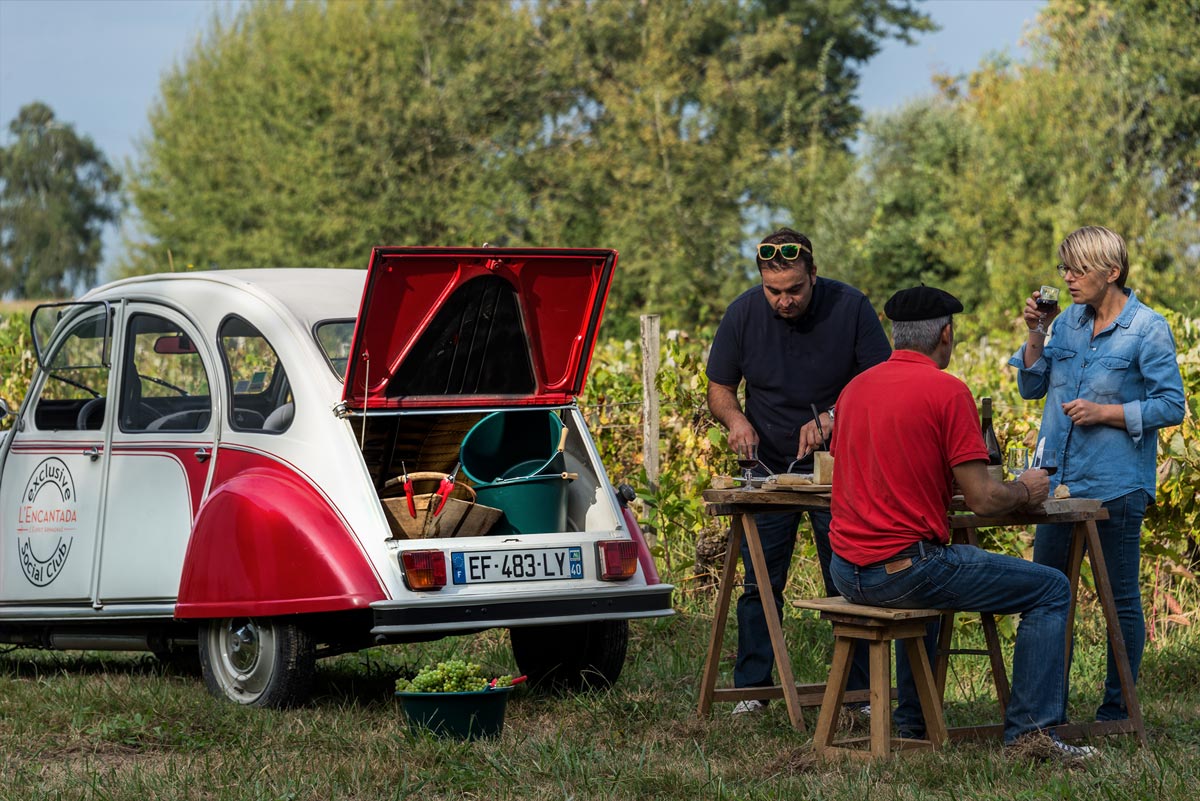
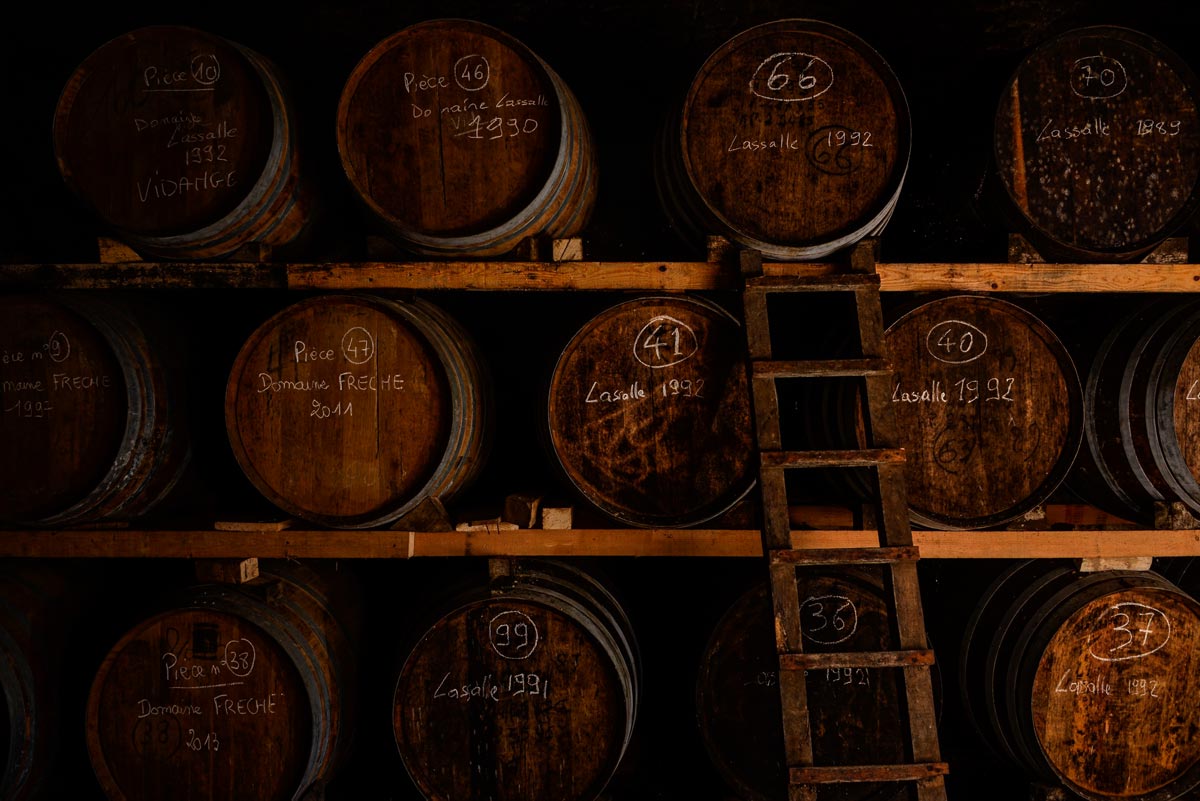
copyright photo by L'Encantada
What is Armagnac made of?
Armagnac has historically utilized a wider combination of grapes than Cognac.
The vines and grapes
As we venture through Armagnac's terrain, we discover that the spirit's unique character lies in its grape varieties. Unlike Cognac, where the neutral Ugni Blanc dominates, Armagnac's grape varietals produce a wide range of tastes and textures.
The practice of using different grapes has evolved for over four centuries, and it remains a vital aspect of Armagnac's character.
Around 1600, vineyards were mainly planted with Piquepoult, also known as Folle Blanche. It was the staple Armagnac grape until the time of the phylloxera.
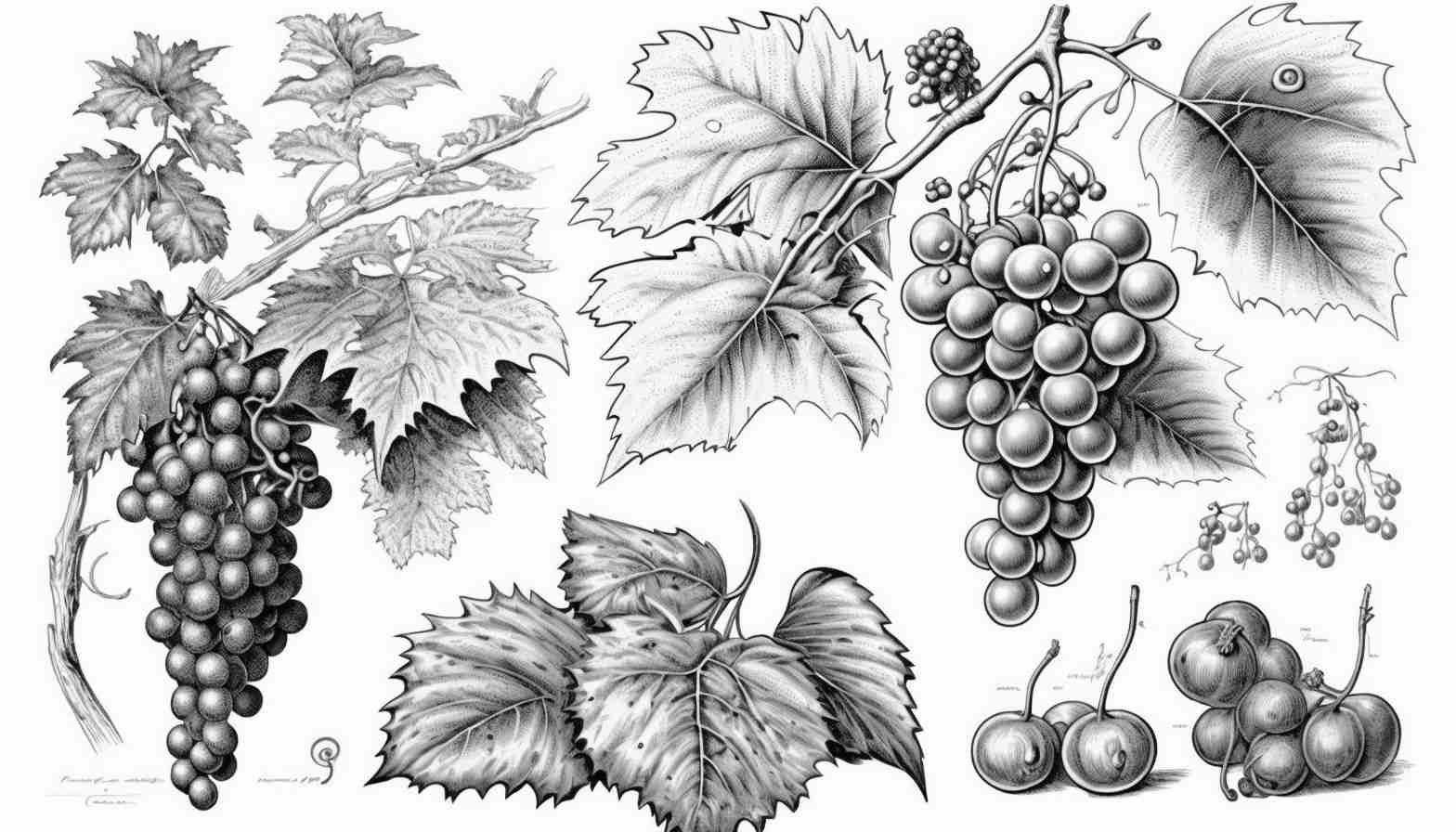
Farmers then preferred grapes like Ugni Blanc, Colombard, and Plante de Grèce, which were less susceptible to maladies. Baco was later introduced, revolutionizing the vineyards and becoming a favorite among farmers.
The Baco grape is an interesting one, being a hybrid of the Folle Blanche and Noah varieties. It was developed as a hardy grape following the devastation of European vineyards following the phylloxera crisis in the 19th century and named after its creator, Francois Baco. It’s the only hybrid grape allowed to be used in the production of Armagnac.
In recent years, Ugni Blanc has surpassed Baco in popularity. Its higher price from négociants is a contributing factor as it can be used for table wines and distillation. The grapes used for Armagnac mature at different times, but due to financial limitations, they are mostly picked and fermented together. For some producers, they can afford to pick, ferment, and distill their varietals separately.
Folle Blanche is typically brought in first, followed by Baco and Ugni Blanc. The average yield of a healthy Armagnac vine is 100-120 hectoliters/hectare, but only 90 hectolitres are allowed to be distilled. The rest must be sold as grape juice or must.
The acidity of Armagnac's grapes tends to be high, and their alcoholic degrees vary between 8° and 11°. The best Armagnacs come from wines that have breathed through the lees. The wines' tartness, low alcohol, and high acidity make them ideal for continuous distillation, but Charentaise-type pot stills and modern alambics can distill higher alcohol levels. Four grape varieties, including Ugni Blanc and Colombard, are commonly used for continuous distillation.
Currently, ten grape varieties are permitted for Armagnac distillation. While not suitable for table wines, they are ideal for continuous distillation.
As we admire Armagnac's landscapes, we realize that its grape varieties are the essential building blocks that create the spirit's rich and complex character.
Other grapes are also permitted—making 10 types in total. Although rarely used today, Armagnac can also be produced from:
- Plant de Graisse
- Meslier Saint François
- Clairette de Gascogne
- Jurançon Blanc
- Mauzac Blanc
- Mauzac Rosé
Only a few grape varieties are allowed to be used in the production of Armagnac. The most frequently used is Ugni Blanc, which occupies 75% of Armagnac vineyards, followed by a hybrid grape variety, Baco, which is often selected for its resistance and productivity. Used in the minority are the rarer and more fragile Colombard and Folle Blanche grapes.These grapes are high in acidity and low in sugar, which makes them ideal for creating a spirit with a complex flavor.
Armagnac Region
A Region Rich in Tradition: Gascony, Home of Armagnac
Armagnac is produced in Gascony, a region renowned for its goose and duck specialities – and like many parts of France, priding itself on its seasonal way of life and living off the land. Rest assured, wherever you spend time in Gascony, you can be sure to find a goose, duck and Armagnac offering on the menu.
Governed by appellation regulations, the Armagnac region covers Bas-Armagnac, Armagnac-Ténarèze and Haut-Armagnac as defined in 1909. More recently, Blanche d’Armagnac now permits the production and export of clear, unaged spirits.


Gascony is a region in southwest France, located between the Pyrenees mountains and the Atlantic Ocean. The region is well known for its production of Armagnac, a type of brandy made from a blend of white wines. The best Armagnac comes from the eastern part of the region, near the town of Condom.
Here, the combination of the warm climate and the soil of the area create the perfect conditions for producing the spirit. The soil in Gascony is composed of limestone, clay, and sand, and the climate is generally warm and sunny, with plenty of rain during the winter months. This combination of soil and climate helps to create the perfect conditions for the white grapes used in Armagnac production. Gascony is also known for its rolling hills and forests, which provide the perfect backdrop for the Armagnac production process.
The area is also known for its traditional Gascon cuisine, which often features game meats, such as duck, venison, and some game birds. All of these elements come together to create the perfect setting for producing Armagnac - and of course for leisurely visits in arguably one of France's most beautiful settings.
Taylor about the Armagnac region and Aurian A25
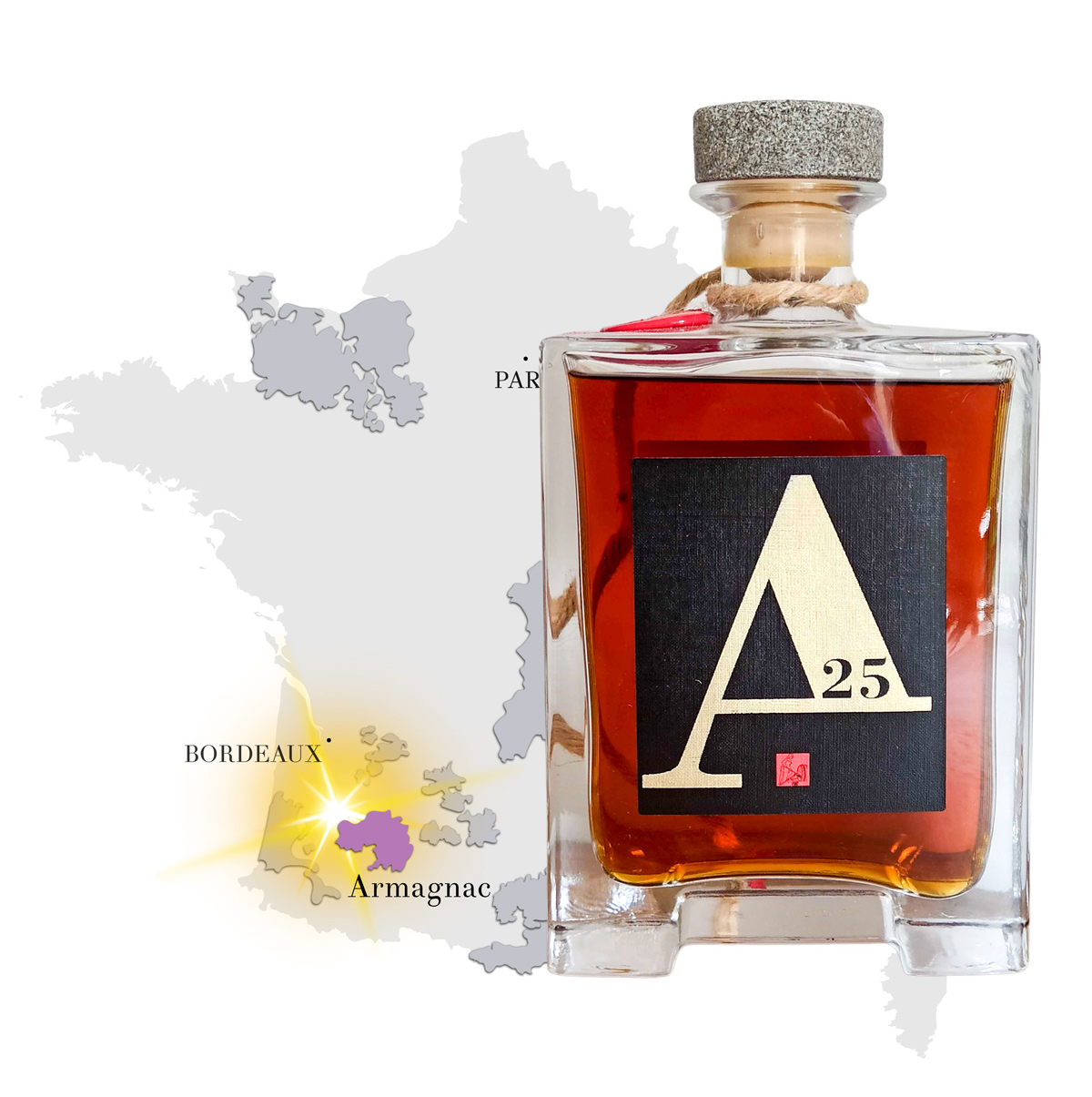
ABV: 45.9 %
Bottle Size: 70 cl

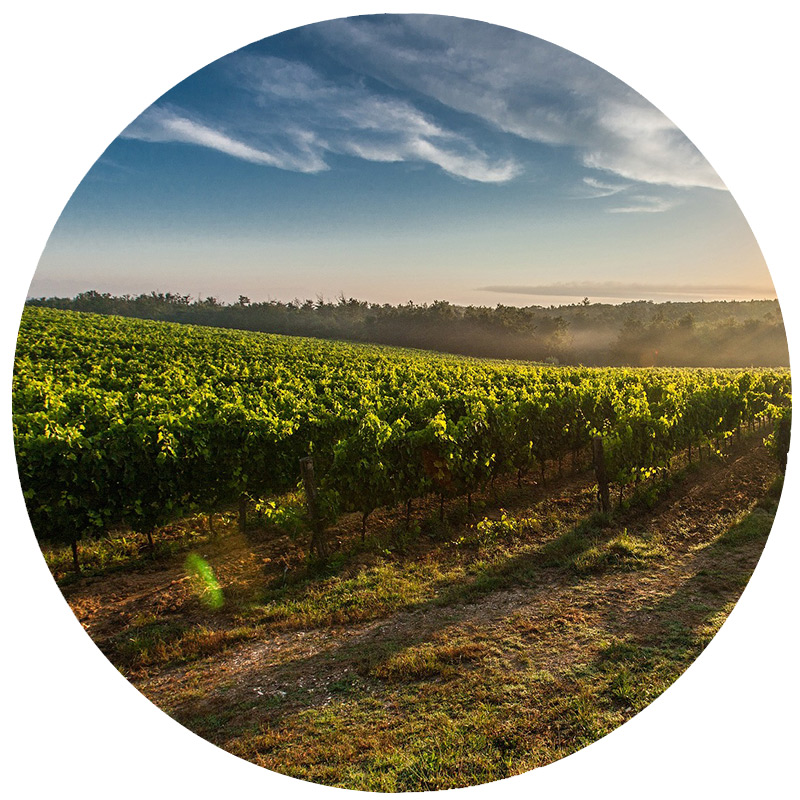

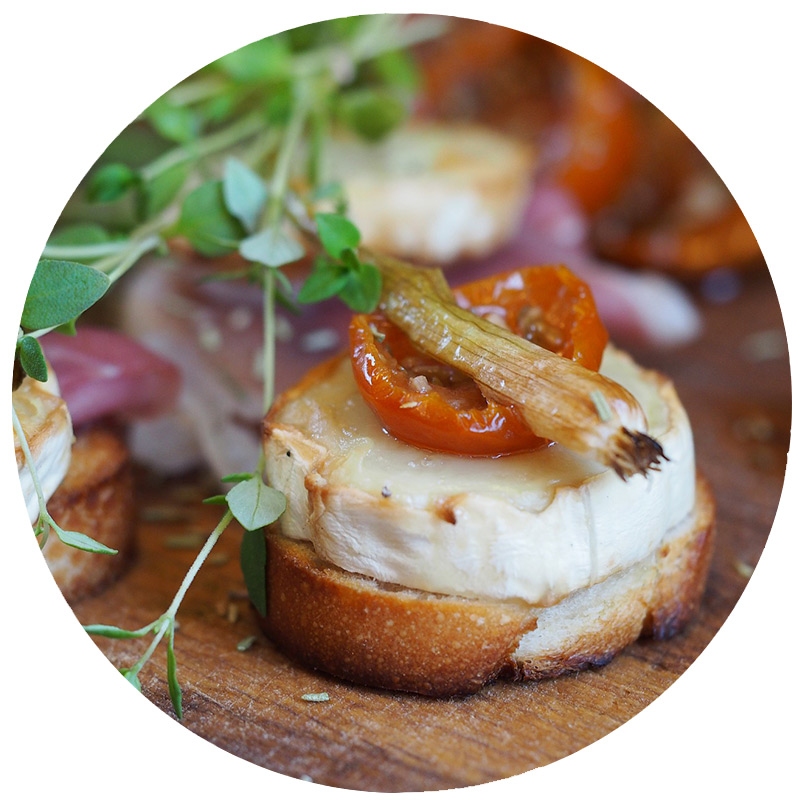
Growth Areas of Armagnac
As we explore the Armagnac region, we can see the striking link between the soil and the vines that grow in it. The region was once part of a deep channel that flowed between the Pyrénées and the Massif Central, which formed over millions of years while the ocean that covered Southwestern France gradually relocated. The valleys created crevices that developed as the currents of water shifted, and the submerged rubble gradually transformed into layers of clay as the water flowed through the valleys.
Armagnac has different growth areas like Cognac. Armagnac is divided into three areas: Bas-Armagnac, Ténarèze, and Haut-Armagnac. All three together constitute a 15,000 hectare vineyard (shared with the IGP Côtes de Gascogne and PDO Floc de Gascogne, of which only 5300 hectares are planted exclusively for the production of Armagnac).
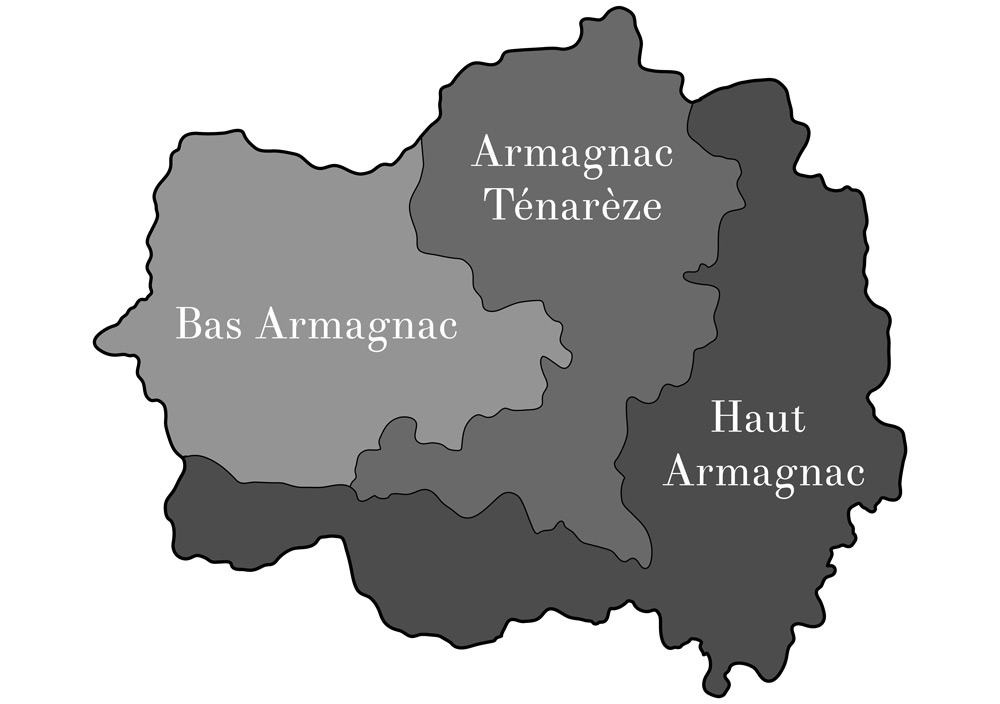
The Bas-Armagnac, an area with lower altitude, is a relatively flat area covered in sand and marine sediment, which blows from the immense pine forests nearby. As we move East into the Ténarèze, gentle hills begin to break up the flat expanses of land, and the soil becomes harder with layers of clay. Further east in the Haut-Armagnac, flat land is rare, and parcels of sand are rare, while the limestone content within the clay rises.
The different-sized grains of minerals and organic matter that make up soil play five essential roles for vines: support, nutrients, drainage of water, reflection from the sun, and heat retention at night. Sand is a large-grained soil that drains water rapidly, while other soils are made of smaller material that has been compressed over the years, such as gravel, limestone, or chalk, and drains water slowly, allowing vines a steady water supply. Clay contains the most minute particles of all and allows little room for water to pass, hoarding water underground in stagnant pools.
While most plants thrive on the rich, clay-based soil, it rarely provides the raw ingredients for wines with any delicacy. Instead, vines tend to flourish on land rarely suitable for other plantings - some say the vines must suffer. Different soils retain differing degrees of heat, with compressed soils like clay tending to stay cooler, producing late-ripening grapes. Sand, on the other hand, tends to heat more quickly and provide roots with more growth potential. During cold weather, vines that grow on sand are much more susceptible to frosts, as was evidenced in 1997 when at least 60% of the year's harvest was lost.
1. Bas-Armagnac
Bas-Armagnac is the westernmost region of the Armagnac vineyard, located principally in the Landes department. It is the most extensive terroir, covering roughly 3550 hectares (planted to vines), and was largely spared from phylloxera due to its sandy soils. These soils are composed of pure sand, boulbenes (small pieces of limestone) and sables fauves (tawny-colored, iron-rich sand).
The eaux-de-vie from Bas-Armagnac are light, fruity and delicate. They boast intense aromas of fresh fruit and floral notes, with a lightly tannic and slightly sweet taste. The sandy soils provide the vines with low sugar levels and high acidity, resulting in an elegant and balanced spirit. Bas-Armagnac is the main production area for Armagnac - and carries the best reputation.
Size: around 3550 hectares
Characteristics: Pine forests, poor and acidic sandy loam soils
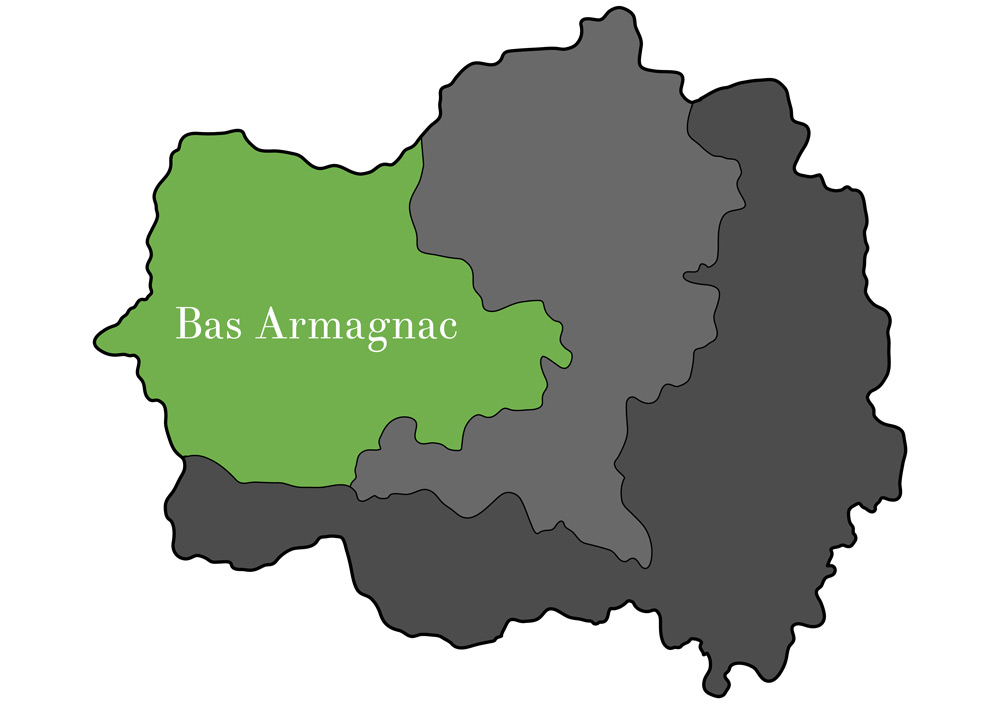
2. Armagnac-Ténarèze
Armagnac-Ténarèze is the central region of the Armagnac vineyard, located between Bas-Armagnac and Haut-Armagnac. It is the most recent of the appellations, created in 1993, and covers 1695 hectares of siliceous soil. This soil is composed of boulbènes and terreforts (clay-limestone soils), which provide the vines with additional nutrients and better water retention.
The resulting eaux-de-vie from Armagnac-Ténarèze are full-bodied and powerful, with intense aromas of spice and dried fruits. They require several decades of ageing in order to reach their peak. The particularity of this region is that the eaux-de-vie are capable of ageing for a very long time, developing complex and interesting flavours over the years.
Size: around 1695 hectares
Characteristics: Siliceous soil, clay and limestone
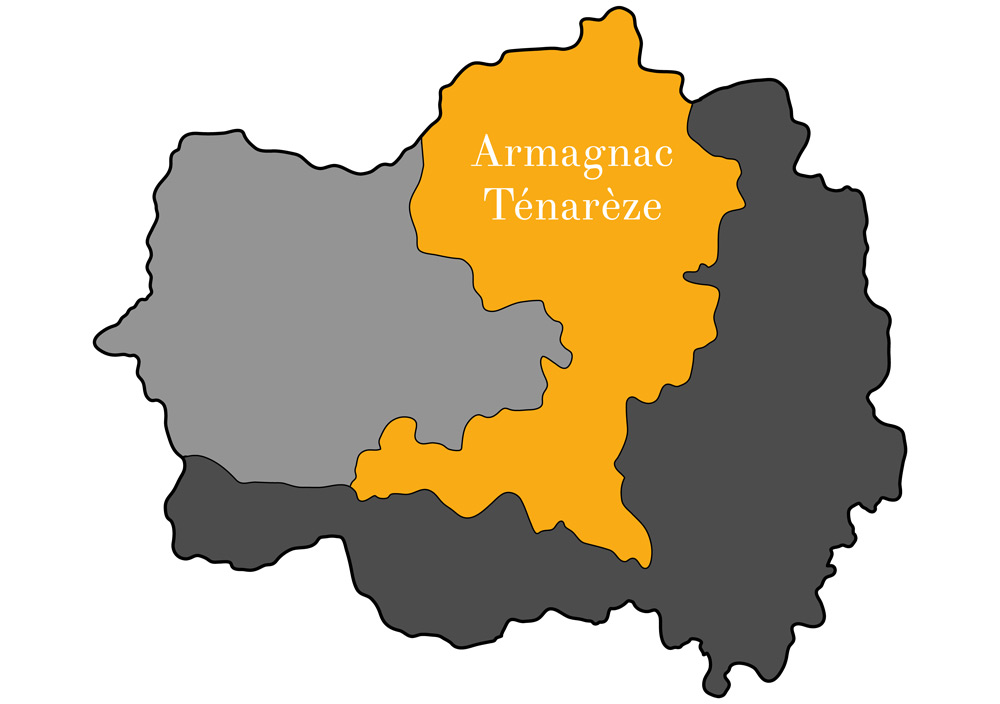
3. Haut-Armagnac
Haut-Armagnac is the southernmost region of the Armagnac vineyard, located along the eastern border of the Ténarèze and the southern border of the Bas-Armagnac. It is the smallest appellation in Armagnac in terms of hectares planted to vines, covering 53 hectares (only). Very few vines remain due to the flat, limestone parcels being used for other crops such as wheat, soybeans, or irrigated corn. The hills of Haut-Armagnac are of limestone and clay-limestone, whilst the valleys are sometimes covered with boulbènes.
Eaux-de-vie from Haut-Armagnac are best drunk young. They are characterised by fresh, fruity aromas with a hint of spice, and a light, smooth body. This is due to the limestone and clay-limestone soils, which are rich in minerals and provide the vines with plenty of nutrients and water, allowing them to produce wines with higher sugar and lower acidity levels.
Size: 53 hectares
Characteristics: Limestone, clay-limestone

Climate
The climate within the Armagnac region is influenced by two significant geographical phenomena that surround it:
The Atlantic Ocean to the West often attracts cool winds and rain that ensures temperate weather. The hot air mass that comes up from the Mediterranean Sea hovers over the flat land near Toulouse and crosses Gascony.
The Bas-Armagnac receives more rain than the rest of the region, mainly due to its proximity to the ocean. The region generally sees snow only a few times a decade, and rain is more common during the relatively short winter season, always accompanied by plenty of heavy fog. The spring is long and humid, the summer hot and humid, autumn long and sunny, and the winter rainy yet short.
Armagnac producers get nervous during two seasons of the year, the spring and the summer. In April, prematurely warm conditions can cause grapes to bud, and if a spring frost occurs, tremendous amounts of buds can be devastated, especially in sandy soil. During late summer, a hail storm could occur, putting ripening grapes in grave danger. However, most years see temperate weather throughout the spring and summer, with sunny conditions persisting into September, ensuring plenty of sun, the most important ingredient for full maturation of Armagnac's raw material.
The soil and climate of Armagnac play an essential role in the production of the finest eau-de-vie. The different soils provide unique characteristics to the vines, leading to different flavors and aromas. The climate, while temperate, can also pose a significant threat to the vines. However, with the right conditions, delicate wines are produced that proceed to distillation, patient aging, and bottling for consumption and maximum enjoyment.

© Michel Carossio

© BNIA
Four Soil Types
As we explore the soils of the Armagnac region, we find four distinct soil types that shape the character of the spirit. The precise soil characteristics are as follows:
The Sablo-Limoneux, or sandy soil, is a highly acidic terroir that yields grapes with high acidity. The vines grown here produce a spirit that is very round in its youth, while also displaying plenty of finesse. This is one of the soil types found in the Bas-Armagnac.
Sables Fauves, or iron-rich sand, gives this terroir its tawny or light brown color. Grapes grown on this sand show lots of suppleness in their youth along with admirable finesse, similar to sand with less iron. This is also one of the soil types found in the Bas-Armagnac.
The Argilo-Sablonneux, or Boulbènes soil, a mixture of sand and clay, yields grapes that show good acidity levels. The traces of clay in this terroir make the soil slightly less susceptible to frost than straight sand. This soil stays slightly cooler than sand, retains a bit more water, and the Armagnacs produced from vines grown here tend to express themselves especially well after ten years of aging. This is one of the soil types found in the Ténarèze.
Grapes grown on Argilo-Calcaire, or clay with small pieces of limestone, normally display lower acidity than those grown on sand and remain slightly firm in their youth. The porous nature of limestone stores rainwater and slowly releases it to surrounding vegetation, almost like a natural system of irrigation. The grapes attain slightly higher alcohol levels and Armagnacs produced from this soil take a good fifteen years to develop, but they decline very slowly as well. This is one of the soil types found in the Armagnac Ténarèze.
The Haut Armagnac production region consists of predominantly calcaire (limestone) soils.
Fun Facts about Armagnac
- Armagnac is the oldest distilled spirit in the world, with records of its production dating back to the 15th century. The spirit is made from a blend of white wines and is aged in oak barrels, resulting in a complex flavor profile with notes of smoke, nuts, candied fruit, and spices - amongst many other things. It can be a blended spirit or a single vintage spirit.
- The Armagnac region is home to the Château de Gaube, an 18th-century castle. It is located on the banks of the Gave River and is renowned for its stunning architecture and beautiful gardens. It is also one of the main production sites for Armagnac, with its own distillery and aging cellars.
- The process of Armagnac production is tightly regulated and closely monitored by the Bureau National Interprofessionnel de l’Armagnac (BNIA). The BNIA is responsible for overseeing the production process and ensuring that the spirit meets certain standards of quality. They are also responsible for creating the three distinct growth areas of Armagnac: Bas-Armagnac, Ténarèze, and Haut-Armagnac. Each area has its own set of regulations and guidelines for Armagnac production.
Armagnac vs Cognac
The major similarities between the two French brandies rest in the fact that both Armagnac and Cognac are made from grapes and are aged in oak barrels. However, there are a few significant differences to recognize too. Armagnac is typically made from a blend of white grapes, while Cognac is made from a blend of white and black grapes. What's more, Armagnac can be aged in barrels that are made from a variety of different oak provenances, while Cognac is aged in barrels made from Limousin oak, and also Tronçais oak. It is these key differences that give Armagnac its distinct flavor and character that sets it apart from Cognac in its own right.
Armagnac’s production region and distillation processes also differ from Cognac. For example, one of the unique aspects of Armagnac production is the use of a single continuous still rather than the double distillation process used in the production of Cognac.
Also, based on the soil types described previously and the eaux-de-vie they produce, it is interesting to note that sandy soils and limestone soils give different results in both the Armagnac and Cognac regions. Bas-Armagnac is a sandy soil and is Armagnac's most reputed terroir, whereas in Cognac sandy soils are found in the Bons Bois and Bois Ordinaires crus, two of the Cognac region's more modest crus.
Learn more about Cognac and the difference to Armagnac.
The main differences between Armagnac and Cognac
| Topic | Armagnac | Cognac |
| Grapes | Bacco, Folle Blanche, Ugni Blanc, and Colombard | Mostly Ugni Blanc, just a little Folle Blanche and Colombard |
| Soil | Sandy soil with warm temperatures | Chalky soil with mild temperatures |
| Distillation | Single-distilled at a low degree (52%-60% ABV) | Double-distilled, first to between 26% - 32% ABV, then to 72%-78% ABV |
| Aging | Limousin or local Gascon oak | Oak from the Limousin and Tronçais forests |
| Alcoholic Content | Often 46% to 48% ABV | Usually reduced to 40% ABV, some naturally reduced or cask strength Cognac exists but it’s the exception |
| Vintage | Given a vintage date | Pretty rare; most Cognacs are blends |
| Varietal | Single-varietal is common, especially Folle Blanche | One rarely sees a varietal printed on the label |
| Négociant | Large négociant bottles 25,000 9-liter cases per year | Négociant like Hennessy releases 8 million 9-liter cases per year (2018) |
| Independent Producer | Top producers often sell less than 5000 bottles per year | Small négociants like Delamain releases 100,000 bottles per year |
| Brand awareness | Armagnac is far less google searched than Cognac | Cognac is searched 10x more than Armagnac, in the US even 16x times more |
| National consumption & Export | 45% of Armagnac production is consumed in France. Only 55% is exported. | Only 2% of Cognac production remains in France. 98% is exported. |
| Yearly sold bottles (2020) | 2,8 million bottles | 220 million bottles |
| Top importing countries | China, USA, UK, Russia, Germany, Spain | USA, China, Singapore, UK, Latvia, South Africa |
| Size of the total region in hectares | 15.000 hectares | 84.640 hectares |
| Total vineyards AOC in the region exclude vin de table | 5.300 hectares (AOC Armagnac & AOC Floc de Gascogne) 9.700 hectares (IGP Côtes de Gascogne) | 83.140 hectares (AOC Cognac & AOC Pineau combined) 1.500 hectares dedicated to Pineau des Charentes |
| Hectares vineyards with grapes destined to distillation (2022) | 5.300 hecatres for AOC Armagnac (destined for distillation) | 83.140 hectares for AOC Cognac (destined for distillation) |
| Growth areas | Le Bas-Armagnac or black Armagnac: 3.551 hectares (67%) Haut Armagnac or white Armagnac: 53 hectares (1%) La Ténarèze 1696 hectares (32%) | Grande Champagne (34700 total hectares, 14133 hectares planted to vines), |
| Topic | Armagnac | Cognac |
| Grapes | Bacco, Folle Blanche, Ugni Blanc, and Colombard | Mostly Ugni Blanc, just a little Folle Blanche and Colombard |
| Soil | Sandy soil with warm temperatures | Chalky soil with mild temperatures |
| Distillation | Single-distilled at a low degree (52%-60% ABV) | Double-distilled, first to between 26% - 32% ABV, then to 72%-78% ABV |
| Aging | Limousin or local Gascon oak | Oak from the Limousin and Tronçais forests |
| Alcoholic Content | Often 46% to 48% ABV | Usually reduced to 40% ABV, some naturally reduced or cask strength Cognac exists but it’s the exception |
| Vintage | Given a vintage date | Pretty rare; most Cognacs are blends |
| Varietal | Single-varietal is common, especially Folle Blanche | One rarely sees a varietal printed on the label |
| Négociant | Large négociant bottles 25,000 9-liter cases per year | Négociant like Hennessy releases 8 million 9-liter cases per year (2018) |
| Independent Producer | Top producers often sell less than 5000 bottles per year | Small négociants like Delamain releases 100,000 bottles per year |
| Brand awareness | Armagnac is far less google searched than Cognac | Cognac is searched 10x more than Armagnac, in the US even 16x times more |
| National consumption & Export | 45% of Armagnac production is consumed in France. Only 55% is exported. | Only 2% of Cognac production remains in France. 98% is exported. |
| Yearly sold bottles (2020) | 2,8 million bottles | 220 million bottles |
| Top importing countries | China, USA, UK, Russia, Germany, Spain | USA, China, Singapore, UK, Latvia, South Africa |
| Size of the total region in hectares | 15.000 hectares | 84.640 hectares |
| Total vineyards AOC in the region exclude vin de table | 5.300 hectares (AOC Armagnac & AOC Floc de Gascogne) 9.700 hectares (IGP Côtes de Gascogne) | 83.140 hectares (AOC Cognac & AOC Pineau combined) 1.500 hectares dedicated to Pineau des Charentes |
| Hectares vineyards with grapes destined to distillation (2022) | 5.300 hecatres for AOC Armagnac (destined for distillation) | 83.140 hectares for AOC Cognac (destined for distillation) |
| Growth areas | Le Bas-Armagnac or black Armagnac: 3.551 hectares (67%) Haut Armagnac or white Armagnac: 53 hectares (1%) La Ténarèze 1696 hectares (32%) | Grande Champagne (34700 total hectares, 14133 hectares planted to vines), |
The most important takeaways when it comes to understanding the similarities and differences between the two eaux-de-vie are as follows:
- They are both brandies produced in Southwest France
- Cognac is double distilled, Armagnac is single distilled
- The process of aeration is often carried out during the maturation of Armagnac
- More Cognac is produced than Armagnac (217 million bottles vs. 6 million bottles in 2019).
- Both have AOC status and their own ruling bodies
- Cognac has a global presence. Armagnac is not so commonly found outside of France (we are working on that!)
- Armagnac is commonly bottled and labeled according to its year of vintage. Cognac is more often blended.
- There are no huge producers of Armagnac (at least not yet)—most are small craft producers. Compared to the huge Cognac producers such as Hennessy, Remy Martin or Martell.
Naturally, Armagnac and Cognac are two types of French brandy that often get compared with one another. While both are high-quality spirits, they have several distinct differences that set them apart. The types of grapes used in their production, the method of distillation, and the reduction process all vary between the two, resulting in unique flavors and aromas.
It is essential for consumers, especially connoisseurs, to recognize these differences and appreciate each spirit as a separate entity.
When comparing the taste of Armagnac and Cognac, some significant differences become apparent:
Armagnac, when single-distilled, has a richer - and sometimes more rustic - texture than the double-distilled Cognac. The fruit of Armagnac often contains notes of plum, apricot, and orange, while Cognac's fruit is typically lighter and more floral. The interaction with oak gives Armagnac notes of toffee, bourbon, caramel, and pepper, while Cognac's interaction yields plenty of spice, but also herbal, steamed, and resinous notes.
Cognac's aromas are subtle, yet not always forthcoming, while traditional Armagnac is more aromatic due to the heightened alcohol content. Armagnac often contains earthy and smoky aromas, while Cognac's alliance with wood is more balanced.
Many Armagnacs usually peak from 15 years of age, while Cognac's evolution curve is slower, and it often peaks around the 25 years and beyond. These are only generalizations; many factors contribute to when a given Armagnac or Cognac reaches its peak.
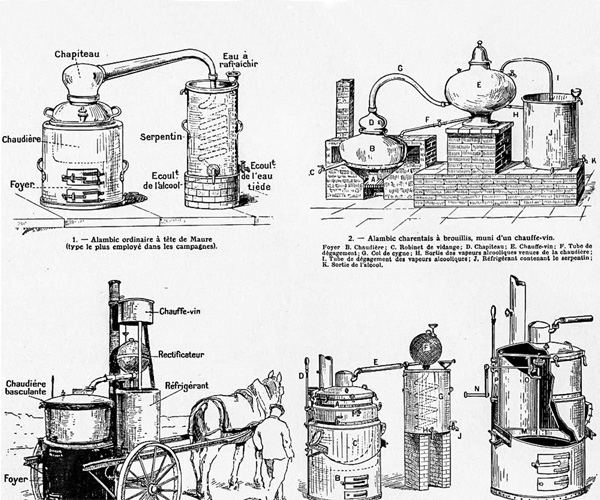

Armagnacs and Cognacs under ten years old tend to be highly commercialized products that should not be taken as examples of the entire Armagnac and Cognac industry. Many producers and négociants hesitate to ask journalists or connoisseurs to taste these releases, as they are not considered "serious" products for demanding palates.
However, these spirits make up over 90% of the entire market and are challenging to differentiate from the pure flavors that arise after a more extended aging period. Armagnacs and Cognacs around ten years old are the minimum required to more easily distinguish the pure differences in taste between the two spirits.
Grapes play a vital role in determining a brandy's ultimate texture and taste. Armagnacs made from Baco tend to be richer than those made from Ugni Blanc, while those made from Folle Blanche tend to have the most finesse. Cognacs, being made mostly from Ugni Blanc, are easier to characterize.
Soil also plays a role in some Armagnacs and Cognacs, as does the quality of oak in which the spirit was raised. There really are so many factors.
Traditionally-distilled Armagnacs around ten years of age tend to have a good concentration of flavor, a rich mouthfeel, and plenty of natural sweetness. The alcohol level adds more heat on the nose, but it also lifts aromas and increases length on the palate.
Cognacs at the ten year age are reduced by at least 20° of alcohol before bottling around 40-42% abv, so the spirit is not as concentrated on the nose or palate and comes across as having less body. The flavors are high-pitched, and they possess some finesse.
Armagnacs and Cognacs can begin to enter their prime around age 15 years, if raised properly. Evaporation has caused the spirit to concentrate and become more viscous, and alcoholic loss has provided a rounder, softer mouthfeel. The fruit has condensed, and certain acids have oxidized, resulting in complex nutty notes known as rancio - a word that is unmistakable when nosing a Cognac or Armagnac, but challenging to properly define with words.
Traditionally-distilled Armagnacs tend to have rich and dark aromas and flavors of preserved fruit like prune, fig, walnut, cocoa, and coffee. The texture of the spirit is fat, creamy, and full-bodied, with spiced-wood notes, hints of vanilla cream, and a presence of rancio. Cognac generally has a finer texture, lighter too, with spice notes, vanilla, and candied fruits.

History of Armagnac AOP Appellation
Cognac has always had a more prominent place in the world of spirits. But why is that?
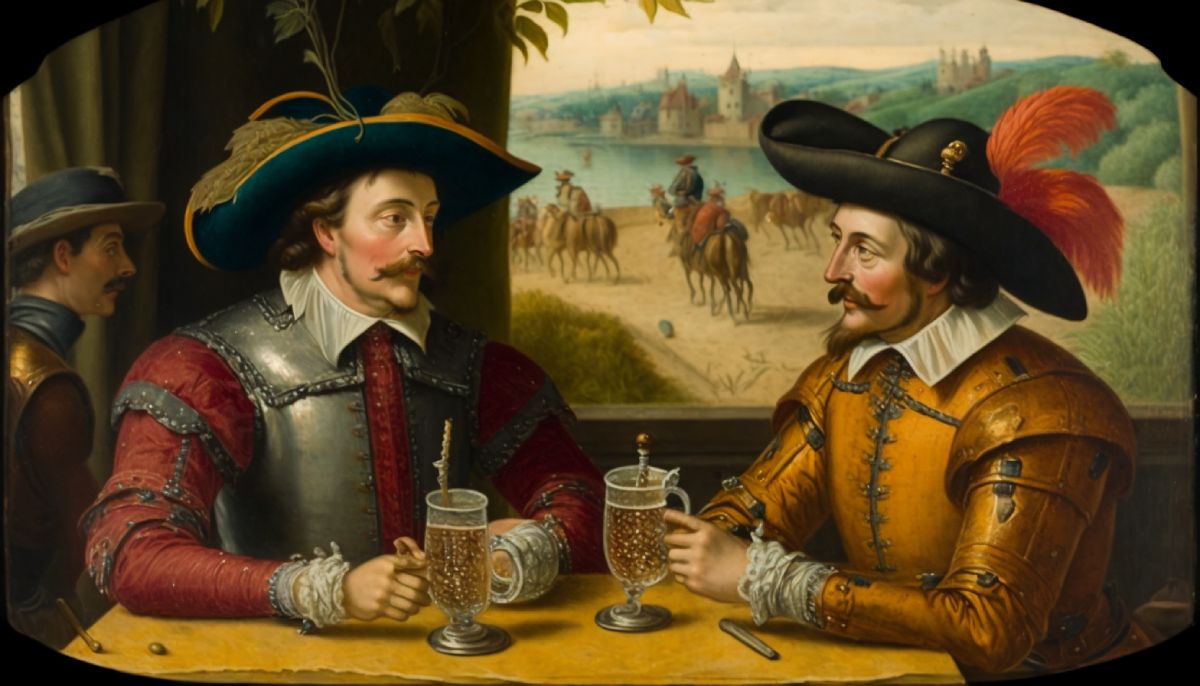
Origins of Armagnac people
As we explore the history of Armagnac, we discover a land with a rich and varied past. What is today known as the Armagnac region has been controlled by different nations and empires throughout its history.
The Roman Empire once ruled over the entire Aquitaine area, with important towns such as Eauze, Auch, and Aire-sur-l'Adour.
The region also saw intermittent invasions by barbarians between the seventh and eleventh centuries, leaving some towns and villages devastated. During subsequent centuries, the British/Acquitanian presence was strong, with walled villages, or bastides, built to protect against peasant upheavals. The 10th century saw the development of villages like Eauze and Condom, while the 11th and 13th centuries saw the construction of many of the region's spectacular castles.
Despite the challenges of history, the Armagnac people have persisted and even thrived, paving the way for the creation of a unique and flavorful spirit that has come to define the region.
Famous Gascons & Armagnacais
We now explore the lives of some of Gascony's most celebrated figures. From the legendary King Henry IV to the valiant musketeer D'Artagnan. This is a tale of bravery, patriotism, and heroism.
Henry IV, born in 1553 in the foothills of the Pyrenees, was a complex man. His father was a devout Catholic, while his mother, Jeanne d'Albret, was a Protestant and Queen of Navarre. As King of Navarre, Henry IV led the Hugenots in their struggle against the French Roman Catholics. But Henry IV was not a die-hard Protestant, and he converted to Catholicism several times for political reasons. After becoming France's king, he won over his subjects with his calm rule, peaceful resolution with Spain, and his love of life's simple pleasures. Henry IV's famous pledge that every family in his kingdom would have a chicken in their pot every Sunday endeared him to his people. In 1599, he issued Europe's first long-lasting proclamation for religious tolerance, ending France's numerous civil wars.
D'Artagnan, the most famous musketeer of Gascony, was born Charles de Batz in 1615 at Chateau de Castelmore near Lupiac. He served with the French guards in Paris and became part of the King's Musketeers at age 42. D'Artagnan was known for his bravery and his humanitarian relations with those who served under him. He led troops during the Fronde War, the siege of Dunkerque, and accompanied the royal convoy to St. Jean-de-Luz for the marriage of Louis XIV to the Princess of Spain. D'Artagnan, a true hero of Gascony, died at age 62 in battle against Holland.
The Armagnacais, renowned for their bravery and patriotism, were added by King Louis XIII to his Company of the King's Musketeers, an elite military regiment authorized to carry muskets. These soldiers from the region accompanied every subsequent French king to battle after Henry IV's rule, heroically defending the French royalty while under constant fire.
As we reflect on the lives of these famous Gascons throughout history, we're reminded of the enduring legacy they left behind. From the complexity of Henry IV's rule to D'Artagnan's bravery, these heroes continue to inspire and captivate us to this day.
As we delve into the history of grape brandies, we cannot fail to mention the fine spirits of Armagnac and Cognac. While both have their distinct characteristics, Cognac has always had a more prominent place in the world of spirits.
But why is that?
In the 17th century, Bordeaux was a bustling port and the center of the wine and salt trade. The British and Dutch markets were hungry for wine, but the long sea voyages often resulted in spoiled wine upon arrival. To prevent this, wine was fortified with brandy, making it more resilient during transportation and allowing it to maintain its drinkability. With the Garonne and Charente rivers connecting Bordeaux with the brandy-producing region of Cognac, Cognac became the obvious choice for the Dutch and British to obtain their fortification material.
However, the transport of Armagnac to major ports was a complicated affair, and the region was relatively isolated. Producers had to cross uneven terrain with their spirits, and the unpredictable waterways to Bordeaux made transportation to key ports difficult. The only other option was to transport the Armagnac to Bayonne, which was a considerably longer route. These factors made it nearly impossible for Armagnac to compete with Cognac in the lucrative and well-connected British and Dutch markets.
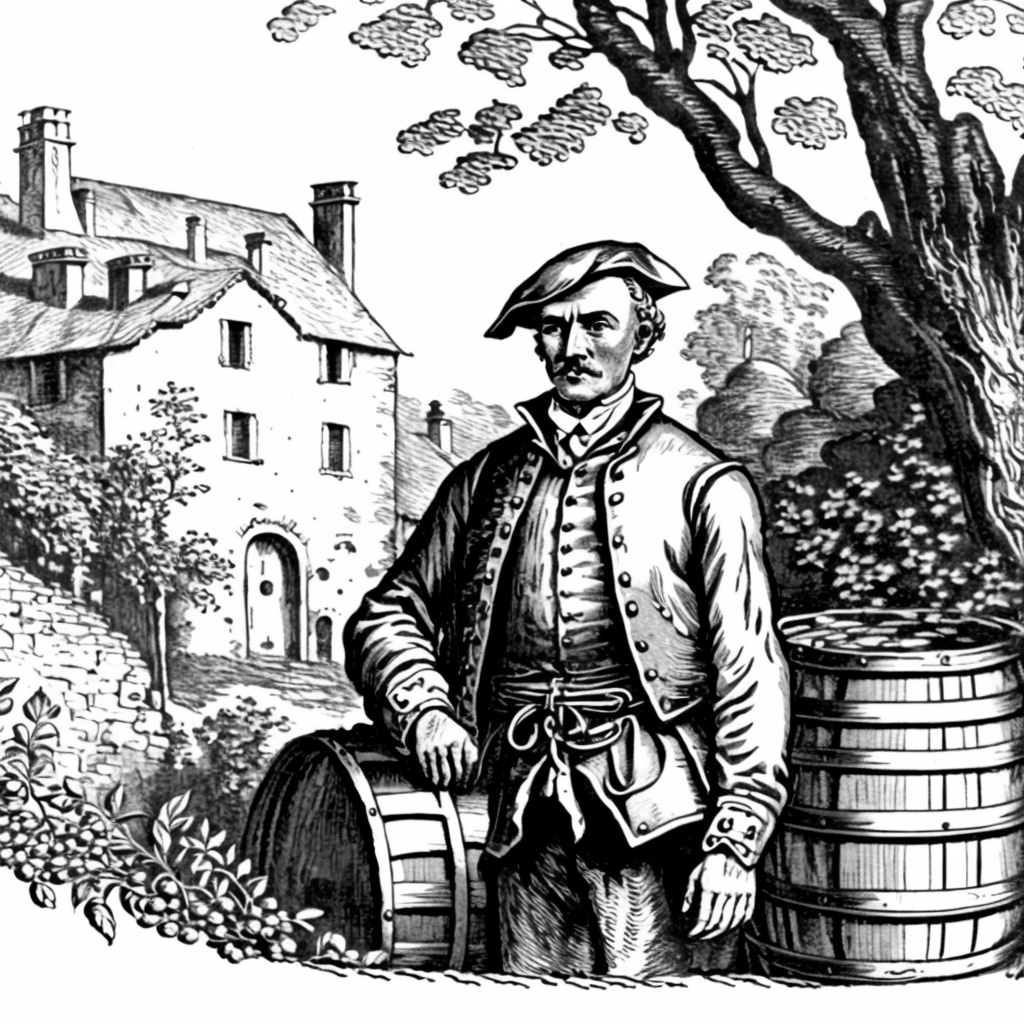
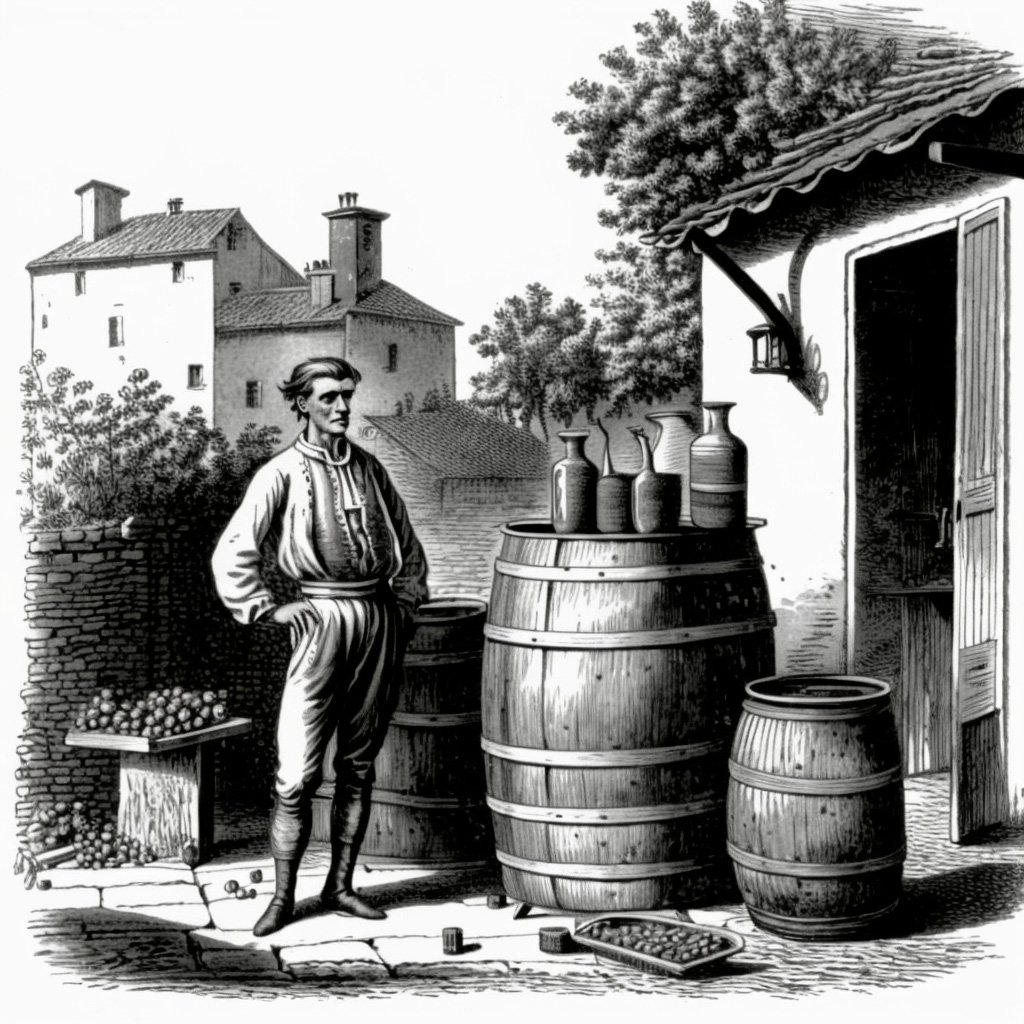
Fortunately for Armagnac, the 19th century brought some positive developments to the region. The introduction of a new still that was both economically efficient and portable helped with production, and a lowered tariff barrier allowed for the export of goods without excessive charges. Additionally, a canal was built that connected the center of the Armagnac region to the Baise River, which enabled direct access to Bordeaux.
These developments inspired farmers in the region to expand their vineyards, and the production of Armagnac experienced a dramatic upswing. Now with a direct outlet for their goods, Armagnac producers began to make a name for themselves. Excitement swept through the region, and négociants began to establish brand names that sold casks with their names on the barrel. Castarède, Larresingle, Janneau, and Gelas are just a few examples of the houses that sprang up during this boom period. Even with this rapid progress, Armagnac still had a long way to go before it could compete with Cognac. The latter had already flourished into a booming commercial center with established foreign houses like Hennessy, Martell, and Courvoisier.
However, foreign clients slowly began to place orders for Armagnac, and the region's production continued to grow. Armagnac's unique qualities, with its earthy and profound characteristics, began to attract connoisseurs, making it a worthy competitor to Cognac.
Unfortunately, Armagnac and other established wine regions were struck by the phylloxera epidemic in the late 1800s, which wiped out most of the grape vines in France.
While the Armagnac region was initially unaffected, the bugs attacked the damp and disease-prone plants in the region, destroying the harvest and future crops. Despite this setback, the region slowly began to recover by pulling up dead vines and experimenting with new hybrids that were resistant to disease.
After World War II, the Armagnac region again faced challenges in promoting its product outside the region. The cognac publicity machine had convinced the public that cognac was the finest brandy, and other grape-based brandies were inferior.
Armagnac receded into the background until the Bureau National Interprofessional d'Armagnac (BNIA) was established in 1941.
The BNIA was established to control the quality of Armagnac before it reached the market, and the regulations were amended in 1972, which allowed double-distillation - among other things.
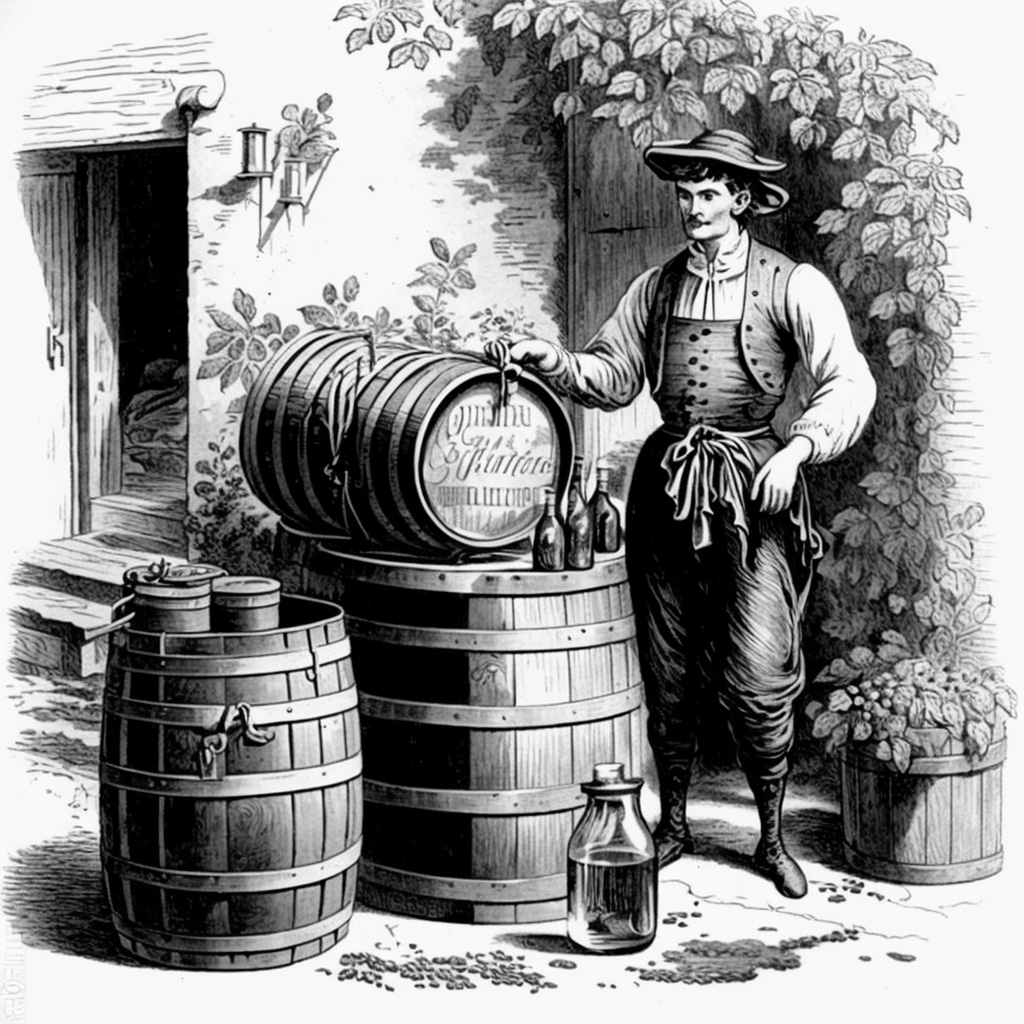
Production process
Experience the centuries-old tradition of Armagnac production - From Vine to Glass
How is Armagnac made?
- Harvest the grapes
- Fermentation
- Distillation of white wines in column stills
- Aging in oak casks
- "Angel's share": Loss of some alcoholic content to the surrounding air
- Blending, or “marrying” of the casks to create the desired flavor profile
- Bottling and release for sale

photo copyright by Château de la Béroje
Fermentation
After harvesting, the freshly pressed grape juice is vinified, without the addition of any sulpher, to produce a white wine. The blends are then made to determine the profile of each eau-de-vie. To complete fermentation, the wine must be sufficiently acidic and contain a low degree of alcohol, generally less than 12°, before it is ready to begin the distillation process.
Fermentation is the process by which a carbohydrate, such as those found in grapes or grape juice, is converted into alcohol and carbon dioxide. During the fermentation process, yeast breaks down the carbohydrates and produces alcohol as a by-product. In Armagnac production, fermentation plays an integral role in creating the base spirit that is then further refined through distillation (see below).
Distillation with the alambic Charentaise
We now delve into the intriguing process of distilling wine into spirits, exploring the traditional models used in both Cognac and Armagnac. By tracing the wine's journey from its initial state to its final transformation into a spirit, we can gain a deep understanding of the complexities of the distillation process.
The alambic Charentaise, also known as the pot still, is a widely used still for brandies around the world - in addition to many other spirits. It consists of several copper domes and holding tanks, and resembles the shape of an onion. The wine is first poured into a central dome, where it gradually flows into a heating tank above a steady gas flame (nowadays gas is a fairly standard heat source). As the wine boils, vapor rises and collects against the inside of the dome. The vapor then seeks an escape route through a hole that leads to a curved pipe known as the swan's neck. It then flows downward through a coiled pipe around a holding tank filled with cold water, where it reconverts into liquid and exits the still with an alcohol level of around 28°, or 56 proof.
Throughout the distillation process, the distiller carefully monitors and oversees the various stages. The heads, which are the first spirits to come out of the still, are usually impure and discarded. The majority of the distillation, referred to as the brouillis, is kept. Meanwhile, the wine that takes the longest time to distill, called the tails, is often too weak and stripped of flavor to produce anything worth keeping, and is therefore discarded. This rigorous process ensures that only the highest quality spirits are produced.
The first usable distillate, the brouillis, is collected and stored in holding tanks while it awaits its turn for a second pass through the still. It is then reinstated in the still and distilled again, resulting in even less waste material than the first distillation. This time, around 99% of the distilled spirit is kept, with an alcohol strength of between 67° and 72°. The spirit is then transferred straight into oak barrels to begin the aging process.
Interestingly, the pot still was widely used in Armagnac until the early 1800s when the continuous still was developed. Double-distillation in Armagnac was officially banned in 1936 but reinstated in 1972.
As we contemplate the intricate and fascinating process of distilling wine into spirits, we can truly appreciate the dedication and artistry of the distillers who have perfected this craft over the years. Through the use of the alambic Charentaise and other stills, the highest quality brandies are produced with a rich history of tradition and craftsmanship.
Distillation Armagnacaise
Join us as we explore the unique process of distilling traditional Armagnac, a one-time distillation that produces a complex and sometimes more flavorful spirit than double-distilled products like whiskey, gin, vodka, and Cognac.
The continuous still used in Armagnac is a primitive version of the modern column still, dating back to the beginning of the 20th century. Unlike industrial models, which can potentially heat the wine to the same degree as a pot still, traditional Armagnac stills cannot. Most alambics produce three to four barrels in a 24-hour period and sometimes as little as one or two, compared to industrial stills that can distill up to 20 barrels a day. Unlike with a pot still, the heads and tails are normally retained in traditional Armagnac, giving it a more complex and flavorful taste - sometimes more rustic too.
The alambic armagnacais being squat and stable, is smaller and more primitive than its cognac equivalent. The alambic armagnacaise is normally portable, enabling distillation to be performed at each producer's property.
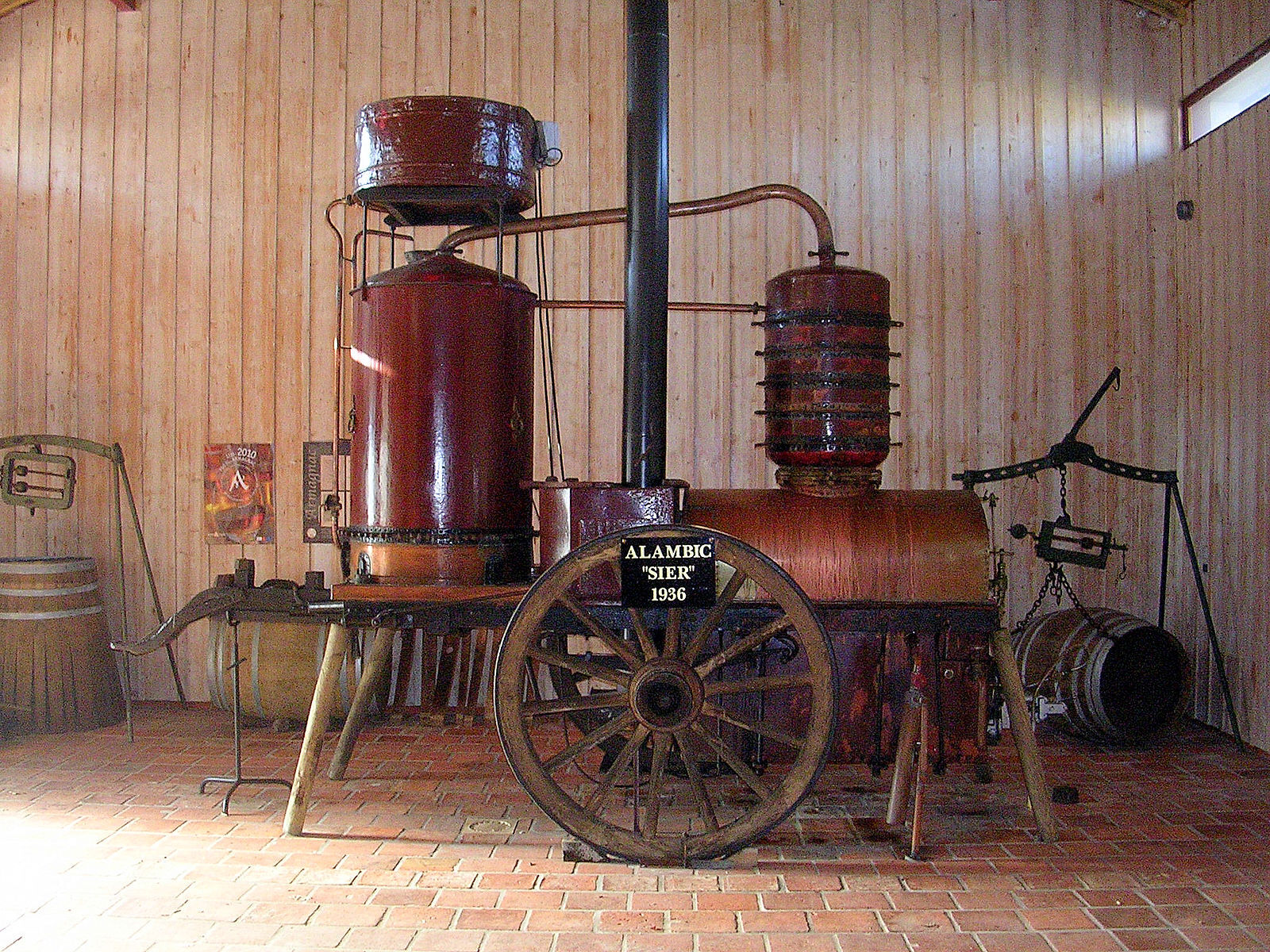
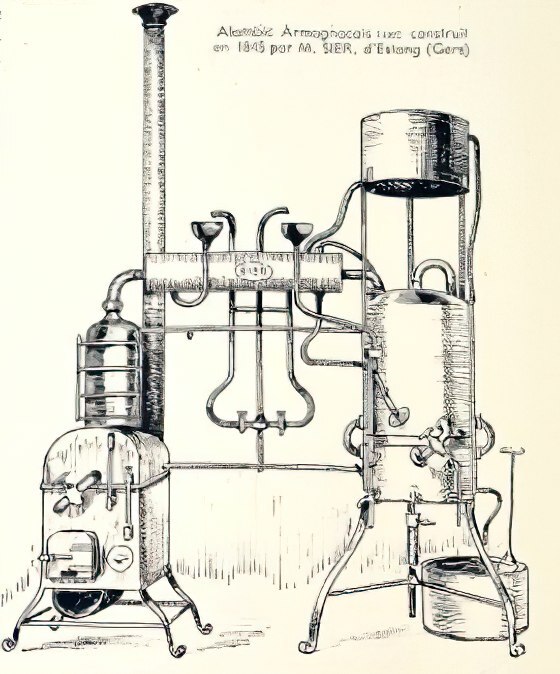
© L'Encantada
How does it work?
Wine is gravity-fed into the wine-boiler and heated by the upper part of the condensing coil. From there, it flows into the main column, where it gets hotter and hotter as it flows over the copper plates. When it reaches the lower boiler, it finally begins to steam and evaporate. The alcoholic vapors rise back through the plates, continually being forced into contact with the incoming wine, resulting in a vapor saturated with rich wine aromas. The armagnac vapors exit through the top of the column and into the condensing coil, where they cool and change from steam into liquid. The liquid eau-de-vie then flows into the wood cask, where it will age and develop complex nuances.
The amount of alcohol produced ranges from 52° to 60°, depending on the initial alcoholic content of the wine. Each still has a particular capacity for the amount of spirit it can distill in a day, and most portable alambics can distill anywhere from 4 to 6 barrels a day. Nowadays, those who regulate the still normally work in 12-hour shifts. The non-alcohol components, comprising congeners, esters, and acids, are what give traditional armagnac its flavor and its charming rustic character. With time, these components age, developing subtle and complex nuances.
Armagnac is meant to be drunk after 15 or 20 years of maturation, where the non-alcohols begin to oxidize and express themselves with an interesting nut-scented complexity known as rancio. Unfortunately, the market is dominated by young Armagnacs ranging from 3 to 5 years of age, where double-distillation strips away the esters and acids, and the neutral base is adjusted with permitted additives to create its flavor. All this being said about the intricate process of distilling traditional Armagnac, we can truly appreciate the dedication and artistry of the distillers who have perfected this intricate skill.
There are two types of distillation that are authorized in Armagnac production: the first and most predominantly used method is the Per Ascensum, known as Armagnacaise, produced by the first continuous jet still – used for 95% of the production. The result of this single distillation process gives the eau-de-vie more flavor and character than Cognac, which is typically distilled twice. The Per Descensum distillation method, known as the Cognacaise, is also authorised in Armagnac production, producing the spirit by the double-heating still. This Cognac distillation method was authorised in 1972 for Armagnac production although it is not widely used – it produces a refined and fine eau-de-vie that should be enjoyed as a young spirit.
Requiring levels of skill only obtained through decades of experience, the distillation process usually takes place around the end of October through to mid-November, however, this can vary depending on the weather and availability of the local ‘alembic still’ the mobile distilling machine.
Upon distillation, the alcohol levels are between 50% and 58%, so some producers will age and then dilute to the minimum 40% at the bottling stage, but many prefer to keep that extra few percent.
Made of copper, an alembic contains two chambers, one with a serpent coil inside surrounded by the cold eau-de-vie, which is then heated gently either by a wood fire or gas (which gives a controllable temperature). The vapours are then condensed with the use of a series of small hat-like configurations within the second chamber that trickle out before being barrelled.
The cellar master and their team must test the eau-de-vie by tasting it and working the machine to produce the desired preference and flavor. This is a 24/7 job that can take several weeks, depending on the year’s harvest. Often two workers (traditionally father and son) will take turns of shift – filling the barrels that are usually made of local French oak.
.jpg)

2 above photos copyright by Château de la Béroje
The Armagnac Distillation History
As we delve into the depths of Armagnac's history, we discover the art of distillation, which dates back to the third century in Egypt. The Greeks, too, practiced distillation, and the Arabs perfected it in Northern Africa during the 11th century. The Arabic term for distillation vessel, "alambic," gave birth to Armagnac's traditional distillation apparatus. In the 13th century, distillation made its way to France through the conferences between the Arab school in Salerne and the French school in Montpellier. The first complete thesis on distillation was compiled by Arnaud-de-Villeneuve, head of Pope Clement V's school of medicine in 1246. The exact date when Gascony was exposed to distilled alcohol is uncertain, but historians agree that it was brought from Spain. The first documented distillation in Gascony was in 1348. While the eau-de-vie was not refined, it was distilled and mainly used for medicinal purposes.
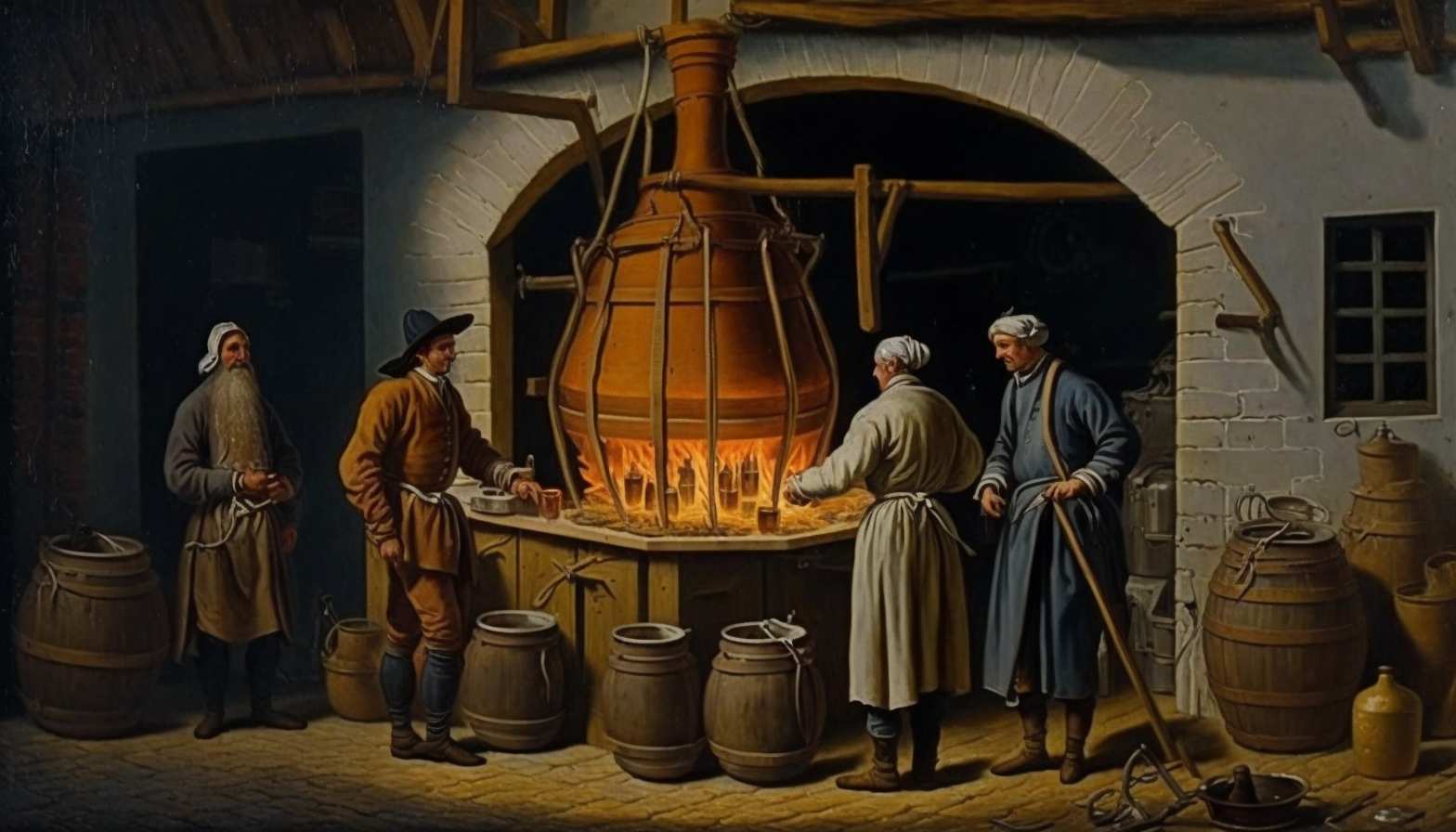
During the late fourteenth century, Charles the Bad, King of Navarre, had a peculiar ritual of soaking his sheets in eau-de-vie and wrapping his entire body with the moistened fabric. Unfortunately, while entwined one night, a servant's candle set the sheets ablaze, causing the King's death. Despite this unusual event, Gascons continued to make further distillations. In 1480, Gascony's first copper alambic was put into practice, and wine was distilled, but Armagnac had not become a pleasurable spirit yet.

By the 1500s, the art of distillation spread throughout Europe, with new and improved stills invented. However, Armagnac was barely known outside the region, and Gascony's most significant export was sweet Jurançon wine. In the 1700s, we have the first precise details on the copper distillation devices operating in Gascony. Multiple distillations took a lot of energy and money, so experiments were carried out to find a more efficient still. In 1801, Edouard Adam helped provide a solution with a primitive device that processed wine with a single distillation, which minimized fueling costs and allowed the alcoholic vapors to pass through the incoming wine before they condensed, collecting all the fragrance of the wine.
During the mid-eighteenth century, distillation within the region became even more widespread, and Monsieur Gier provided a model for the present Armagnac alambic. His unit was small, fueled with low-cost wood, and could be transported by a team of oxen. With several portable units running around the countryside, each farmer could distill wine before oxidation took place.
This richer spirit contained impurities that kept it raw for a more extended period than those distilled twice at higher temperatures. Even today, very few independent producers survive on Armagnac alone. The risk was higher when attempting to produce Armagnac using this method, but the result was a more complex and aromatic spirit that stood out for its quality.
The Mighty Oak: Aging Armagnac in Barrels
In the world of armagnac, white oak barrels are the chosen vessel to store and age the spirit. These barrels are carefully selected, as they play a critical role in developing the flavor and character of the final product.
Aging is an important stage in the production of creating Armagnac. Through the aging process, Armagnac loses its crystalline pure eau-de-vie color and character. It develops its characteristic amber caramel color, while replacing its original floral freshness for its smoothness, aromatic richness and distinct woody and vanilla aromas. Usually, the maturation process reveals no less than 80 aromas, depending of course on the terroir and quality of distillation.
Barrels do more than just hold the armagnac, they also contribute to its color, tannin content, and flavor profile. In addition, the oak allows for a slow micro oxidation, a vital process that enables the spirit to breathe and mature.
But first, the Cellar Master must select the right barrels they see fit for the task.
Barrels (400 liters) are made from the same tree, and the strength of the grain will depend upon where the wood is sourced within that tree. The sourced wood is selected locally, just like every other component of the Armagnac-making process, in order to preserve tradition and history. If a rougher grain is opted for initially (usually for the first two to three years), the tannin yield is high. It gives the eau-de-vie its color and taste before it is ready to be transferred to a ‘smooth’ barrel to continue maturing for another number of years.
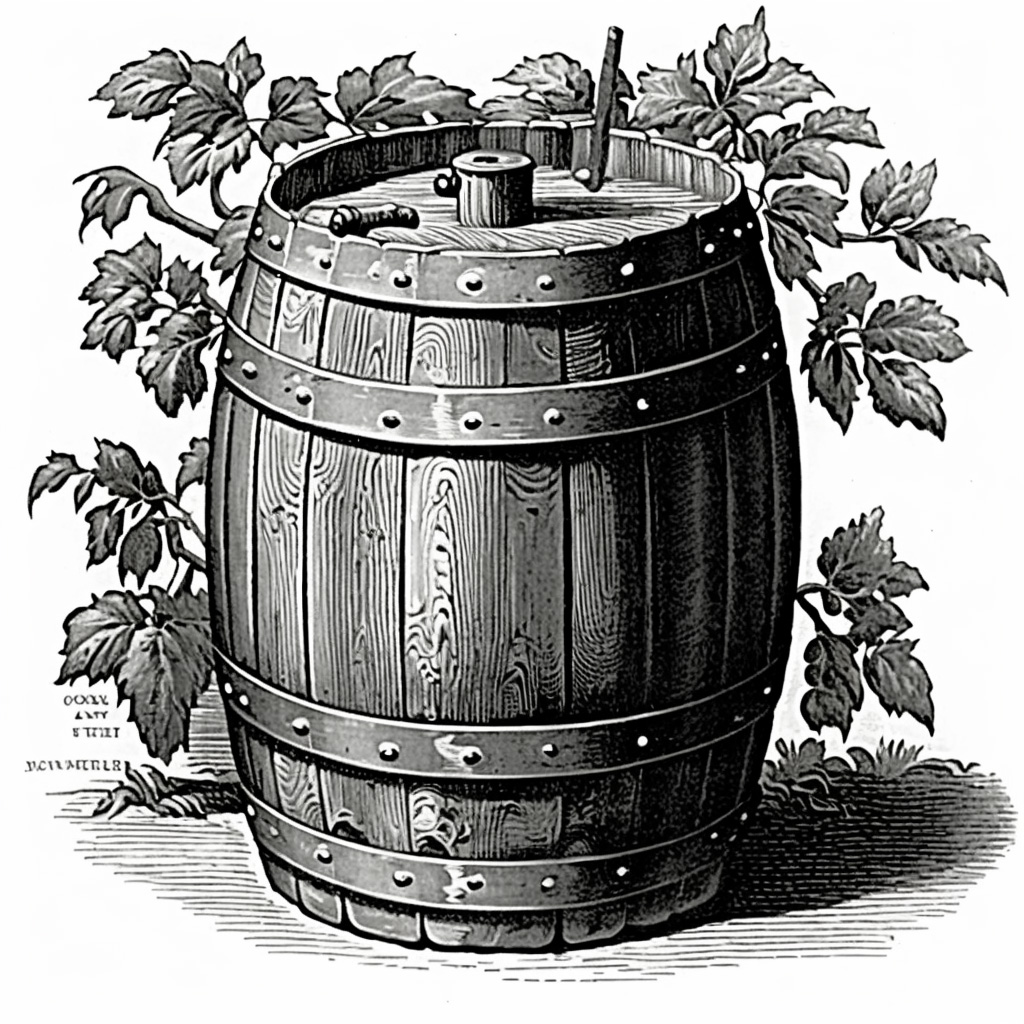
.jpg)
© Michel Carossio

© Michel Carossio
While oak from the Armagnac region was traditionally used; however, staves from various other French forests are now employed to create these barrels. Each forest's unique characteristics, including soil type and climate, influence the oak's grain structure.
Trees grown in dry, poor soil produce tighter grain, while rich fertile soil leads to larger grain. The wider the grain, the greater the potential for tannin and flavor components, such as vanilla and spice, to be secreted. Wide grain also promotes faster oxidation, which is crucial for proper maturation.
The oak trees used for barrels are typically between 100-150 years old. This age ensures the necessary girth of the trunk, an important factor since much of the wood is wasted in the splitting process. Only about 10% of a tree's trunk is used for barrels. The second tier, which is straight, free of knots, and has no twisted grain, is usually chosen for barrels. One well-formed trunk can create two complete barrels. The bottom tier, the most expensive part of the tree, is used in the production of fine oak furniture. The top tier, the largest but least expensive part of the tree, has a variety of uses as well.
While Limousin oak is commonly used for aging, only 35% of armagnac is stored in casks made of this wood. A smaller percentage is aged in regional Gascon oak, and the rest is aged in oak from other French forests. The quality of the grain is considered more important than the origin of the wood.
Once the armagnac is placed in the barrels, the long journey of aging and maturation begins. Each barrel holds the promise of an exquisite spirit, infused with the unique characteristics of the oak it calls home.
Depending on the wood and the cellar, the evaporation of the alcohol will be between 2% and 6% per year: this is commonly known as the "Angels' share".
At the end of the maturation process, the eau-de-vie is often around 40°, either through the addition of distilled water or "petites eaux", or through natural evaporation which can only happen over several decades. From this point, the Armagnac is finally ready to be bottled for consumption.
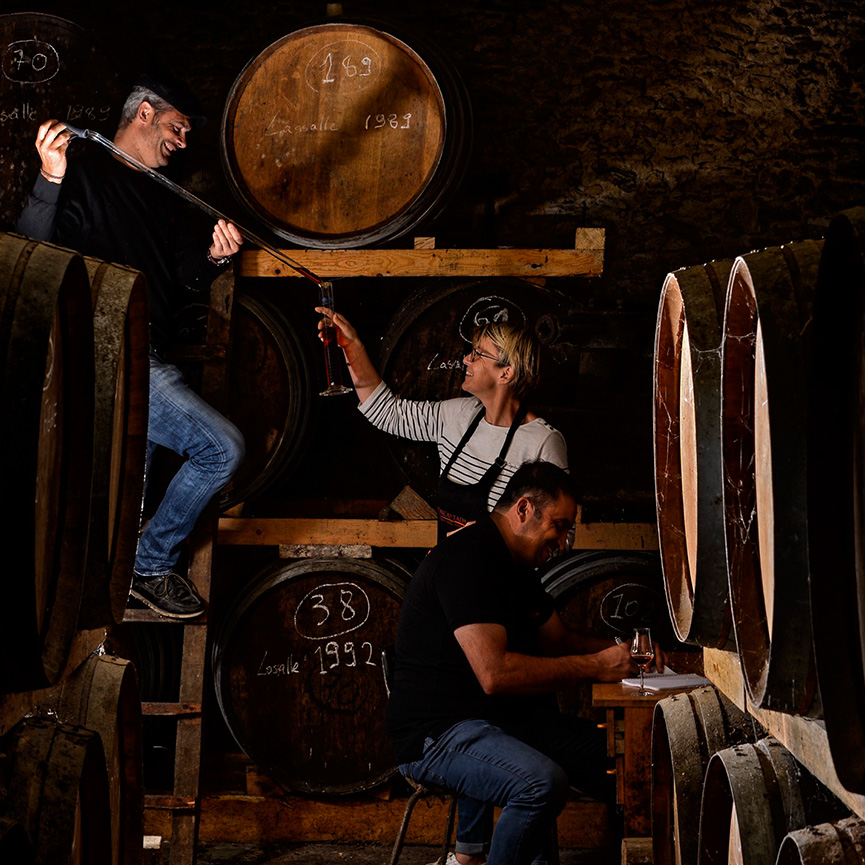

photo copyright by L'Encantada
Oak Types
Gascon Oak
In the heart of the Armagnac region lies two forests, Monlezun and Monguilhem, where Gascon oak traditionally grows. The Gascon oak, also known as the quercus silicus, belongs to the white oak family, yet it is often referred to as black oak. The reasons behind this nickname are varied, but some say it's because of the dark sables fauves soil upon which the trees grow. Others cite the pine trees surrounding the oak trees that have a green hue, making the oak trees appear black in comparison. Furthermore, the forests offer ample shade, and the trees' outer surfaces are often covered in ivy and moss, furthering the black appearance.
In the past, it was common to use trees from the region for aging spirits, but today, there are only a few hectares of black oak left in the Armagnac forests. Most independent Armagnac producers plant more corn on their land than the total surface area of trees in the Monlezun forest. However, some producers look to forests in the Gers, Dordogne, or the Pyrénées that have similar soil and moisture conditions found within Armagnac. While the trees from these regional forests do not grow as straight as those in the central forests, their wide grain still secretes tannins and flavors such as vanilla and spice that complement Armagnac's thick, rich eau-de-vie.
Limousin Oak
Today, Limousin oak is the primary wood used for aging Armagnac (and Cognac) due to the limited amount of Gascon oak left. The Limousin forest, located about a hundred miles east of the Cognac region, boasts the widest grain of any oak, about eight grains per inch, due to its rich soil and higher rainfall. Its loose pores facilitate a fast rate of oxidation, which allows for the concentration, deep color, and greater extraction of flavors contained in the wood. Although Limousin oak and Gascon oak have similar grain sizes, the former tends to give slightly higher levels of vanilla, while the latter yields more tannins.
Allier & Tronçais
Other French forests, like the Allier and Tronçais, also produce tight-grained wood that contains about 17-18 grains per inch, respectively. Producers who use Tronçais often make quality wine as well and use the barrels to age their best products. Additionally, their smaller size allows them to be stacked in a chai with a low ceiling, where two 420-liter barrels might not fit. Every top Armagnac producer allows their spirits to be exposed to some new oak, heightening the levels of flavoring components. Over time, the air passes through the wood, interacts with the Armagnac, and carries with it wood secretions such as tannins, vanilla, and spice. Producers must carefully monitor their Armagnacs to prevent them from becoming too tannic or too dark, as these traits are difficult to lessen once present.
Barrel Toasting
After the cooper has assembled the barrel, it's time to toast the wood.
The cooper places the barrel over a slow burning fire, to activate the sweet components of the wood. To get the desired effects, producers employ several levels of toasting. Medium toast is a gentle heating that releases light vanilla elements from the wood, while heavy toast cuts some of the vanilla flavors and increases caramel, licorice, coffee and chocolate nuances.
After the toasting process is complete, the cooper drills a bung hole in the center of the barrel and seals it with a hot poker. The heads and tails of the barrel are made from staves that are held together with wooden dowels, and circular forms are cut and inserted into each end of the barrel. Additional hoops are added, and the barrel is tested for airtightness and sanded clean. Finally, the barrel is topped with a plastic or rubber cork.
Every producer of Armagnac exposes their spirit to new oak, allowing it to receive heightened levels of flavoring components. As the air passes through the wood, it interacts with the Armagnac and carries with it wood secretions that include tannin, vanilla, and spice.
It's important for producers to monitor the amount of tannin the Armagnac absorbs, as too much can make the spirit too dry, even astringent. A new barrel can provide adequate flavoring substances for a handful of vintages.
Evolution in the oak
As we observe the evolution of Armagnac in oak, we find that after the initial contact with new oak, the spirit is often moved to older barrels, where it undergoes a gradual transformation. With time, the intense heat and spice of the young Armagnac mellows out, giving way to a more concentrated rounder flavor profile and a slightly lower alcohol content.
The way in which an Armagnac producer stores their spirit is crucial in determining its final character. Each producer has a unique chai, some resembling the grand warehouses in the Charente, while others are more humble in appearance. The conditions within these cellars are also a significant factor, with some being dimly lit and kept moist with a beaten dirt floor, while others are more organized with cement floors and fluorescent lighting.
The level of humidity within the chai also plays a significant role in the Armagnac's maturation. In a humid chai, the alcohol levels tend to diminish at a faster rate, while the quantity evaporates less slowly. Conversely, in a dry chai, the alcohol content reduces at a much slower rate, while the quantity evaporates quicker.
Due to the porous nature of wood and the gradual reduction of alcohol and water when exposed to air, a certain amount of Armagnac is lost to evaporation each year, known as the "angel's share." This process is encouraged by the presence of a black fungus - called torula - that thrives on the alcoholic fumes and covers the roof tiles of many chais.
Producers often top up their casks with the same vintage to slow down evaporation. This can also help to create a more concentrated flavor profile, as a lack of water in the Armagnac results in a higher concentration of flavors.
The most common form of aeration is racking, which involves pumping the Armagnac from one barrel to another, giving the spirit a breath of fresh air. Another method involves pumping barrels from the same vintage into a larger vat to marry for a few days before being rediffused into different barrels.
Although some aeration is necessary, minimal intervention is best to preserve the rich esters responsible for a complex bouquet. The purest form of Armagnac is achieved by natural reduction, but this can pose several problems for producers, including higher taxes, the risk of over-oaking, and a longer amount of time before the armagnac can be bottled and sold.
As Armagnac matures, its color deepens, and the fruit and oak flavors become more integrated. With time, the oak notes can dominate the spirit, giving way to dry, polished, antique oak. Additional aging in larger containers called tonneaux can help control the alcohol and wood levels for an extended period, giving producers greater control over the final product.

Additives in Armagnac
Armagnac additives are critical components that must be used during the various stages of the spirit's production
As aficionados of Armagnac, we understand the value of scientific knowledge in the creation of this delightful spirit. During the three significant stages of fermentation, élevage, and blending, it's essential to enlist the expertise of an enologist.
With their technical qualifications, they can help produce a healthy and adequate base wine for distillation, provide advice on barrel rotation and aeration, and assist in achieving a balanced blend. Although the ultimate goal is to create a natural blend, sometimes, the enologist must intervene, utilizing four categories of allowed additives.
Sugar
Armagnac additives are critical components that can be employed during the various stages of the spirit's production. One of the essential Armagnac additives is a sugar syrup, which adds sweetness to the spirit and helps remove any rough edges it might contain. Legally, only 2% of an Armagnac's content can be sugar. Sugarcane syrup can either be dark or light, depending on the preferred level of sweetness. This additive is typically added when the Armagnac is too tannic, making it smoother and rounder. Spirits that come from certain countries, such as Japan, China, and Spain, are generally preferred to be sweeter. In response to this demand, the maximum legal limit of sugar is typically used in blends that are destined for these markets. However, the primary purpose of this addition is to add sweetness to the spirit, which in most cases caters to the demands of these markets.
Boisé
Boisé is a critical Armagnac additive. It is obtained by boiling wood chips in water for several hours, removing the wood chips, and then slowly reducing the remaining liquid. The resulting dark brown liquid is replete with a woody flavor and tannins, which give the spirit an oak-aged flavor. It is a valuable shortcut to long-term aging, especially when a producer cannot afford to buy new barrels. Most boisé used in the armagnac region has its origins in the Charente, where its use is already established (but decreasing in today’s times). Most cognac producers also have barrels of boisé in their cellars that, when blended with cognac, evolve gradually and provide a shortcut to long-term aging. Incorporating boisé into a cask early in the spirit's life ensures that it matures along with the spirit. However, if this is not possible, an aged-boisé is also available to the enologist. This more mature style of boisé is less bitter than straight boisé and offers secondary wood aromas like vanilla and grilled nuts. It helps give an impression of age to a spirit.
Water
Water is another critical armagnac additive that is used to reduce the spirit's final alcoholic degree. There are several ways of reducing the spirit, such as distilled water, demineralized water, or the petites eaux. Proper reduction should be done either immediately after distillation or gradually over several years to ensure a balanced and cohesive blend. Slow reduction, at three to five degrees at a time, ensures a proper harmony within the final spirit, making it more difficult to detect and to avoid any feeling of dilution. Ultimately, this lessened strength permits a more supple spirit that can allow certain aromas to surface above the alcoholic heat.
Caramel
Caramel (E150a) is an essential Armagnac additive that can be used to adjust the color of the spirit. It is made from burned sugar and is very dark in color. It is not used to sweeten the spirit but to adjust its color. The consistency of the color is of utmost importance to negociants. Every oak barrel gives different levels of coloring material, and thus a consistent color must be achieved. A darker spirit gives the impression of having been aged longer and, therefore, appears smoother. The preferred color of VSOP's and Napoléons can be achieved by adding caramel after various barrels have been emptied into a larger blending tank.
In short, Armagnac additives, including sugarcane syrup, boisé, water, and caramel, are critical elements that are often but not always used during the production process. These additives are employed to help enhance the spirit, and in many cases are used to meet the demands of a specific market. It is not uncommon for a producer to adjust color for export to one country but leave color natural for another country. By understanding the purpose and optimal use of these additives, a master distiller can realize a sound and balanced armagnac blend.
The Cellar Master's Magic
One of the most common tricks is to use oak chips to give the impression that the spirit was aged in small barrels, despite actually being aged in large tonneaux. These chips impart flavors of wood and tannin, which are typical characteristics of an aged spirit. Another trick is to add boisé, which is made by boiling wood chips in water for several hours and then removing the wood chips. This results in a liquid that is rich in wood flavor and tannin. When used in small amounts, boisé can simulate long contact with wood, giving the impression of an aged spirit. To smooth out the rough edges of a brandy, some producers add sugar syrup, which is legal up to 2% of the final product. The sweetness of the syrup gives an impression of concentration and full-body, and most customers associate a spirit's quality with its level of smoothness.
In order to give the impression of true aging, distillers sometimes add a few liters of thirty-year-old spirit into one of the large casks. While this has only a minimal qualitative effect, it provides great advertising possibilities for the producer, who can now claim that their final product contains brandies that are "thirty years old." To deepen the color of the spirit, caramel is liberally added, making it quite dark and giving the impression of an aged spirit. Finally, the product is packaged in an expensive-looking, odd-shaped bottle, and marketed with a label designed to appeal to customers. Labels can be misleading, with terms like Trés Vieille Réserve often being added to give an impression of age and sophistication, even though they are often meaningless. The label also tends to highlight these important-sounding terms to distract from the fact that the spirit may only be around 6 years old.
Armagnac age categories
Experience the centuries-old tradition of Armagnac production - From Vine to Glass
The Armagnac bottle and the Armagnac Label
Now let's discover the intricate details of Armagnac labeling and the first Armagnac bottle.
The first Armagnac bottle was used in the early 15th century and was made of glass, similar to the bottles used today. However, unlike today's bottles, there were no regulations for the shape of the bottles. Currently, there are laws concerning the volume of Armagnac contained in a bottle, but the shape of the bottle remains unrestricted. Traditionally, the Bâsquaise flacon was employed for Armagnac.
Still, it takes up a lot of space on the shelf and lacks sophistication, so many Armagnacs are marketed in the clear, smooth-shouldered Cognacaise bottle. Some Armagnac producers have taken bottle design to the next level by incorporating their own custom molds; however, Armagnac bottles tend to be much more simplistic than many of the glitzy decanters found further north in Cognac.
Now, let's move on to the labeling information for Armagnac. If you've ever been confused by the different labels on bottles of Armagnac, you're not alone.
The letters VS, VSOP, and XO refer to the aging of the Armagnac, where the age on the bottle represents the youngest spirit in the bottle. The minimum age is required on the label, but the maximum age is not. The different commercial denominations, such as Hors d’Age and X.O., indicate the length of time the eau-de-vie has been aged in wood, but can be misleading as some producer's XOs can in fact contain all 20 year old Armagnac.
Armagnacs correspond solely to the year of harvest declared on the label, if the vintage year is stated on the label.
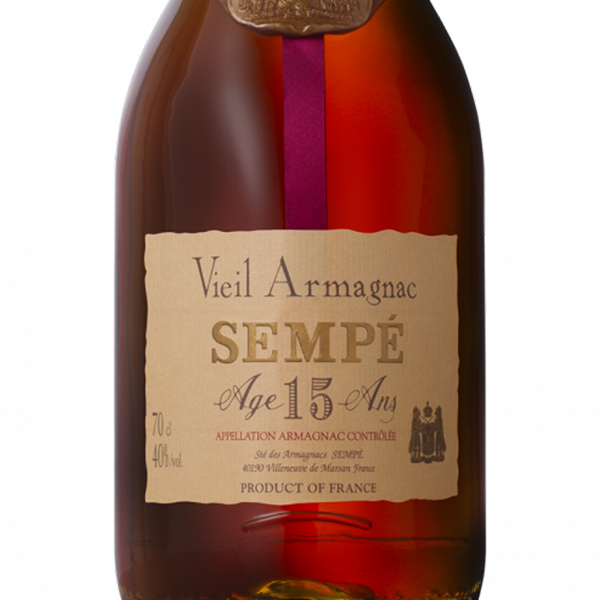
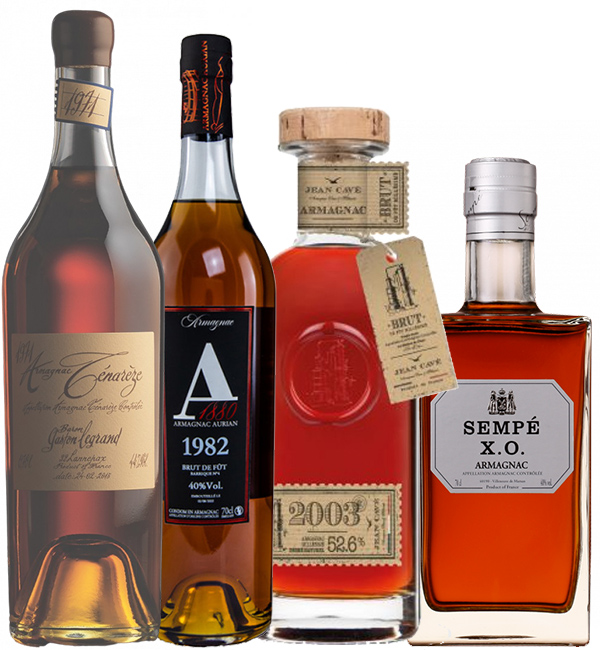
To make it very simple, here is a short summary of age designations and the associated legal minimum ages:
VS: 1 year in oak barrel
VSOP: 4 years minimum in oak barrel
XO or Hors d’Age: 10 years minimum in oak barrel Vintage /
Millesime: Armagnac from a specific single harvest The age of Armagnac can be determined by its designation on the label, which refers to the youngest eau-de-vie in the bottle.
The BNIA has established a minimum age count system that helps simplify labeling information. It is crucial to understand this system to determine the age of a blended Armagnac accurately.
- Count 00 runs from the harvest date until the last permitted date of distillation, which is now January 31, and these spirits may not be marketed as Armagnac.
- Count 0 runs from January 31 to the following January 31 and includes spirits that are between 4 and 12 months old, which do not have the right to be marketed as Armagnac - yet.
- Counts 1-3 are for Armagnacs that have at achieved their first through third birthdays and can be labelled as VS or 3 Étoiles.
- Counts 4-5 is for spirits that are 4 and 5 years old and permitted the 5 Étoiles, VSOP, VO, Réserve, or Réserve Spéciale titles.
- Count 6 is for spirits that are 6 years old and allowed the Extra, Napoléon, Vieille Réserve, or XO title (before 2018).
- Count 7-9 is for spirits that are 7-9 years old, and…
- Count 10 is for spirits that are at least 10 years old and permitted the Hors d'Age title, but also the XO designation.
VS Armagnacs
The youngest Armagnac is known as a VS or 3 star (***) and is aged between 1 and 3 years.
Armagnacs of this classification are made for those that enjoy fruity and fiery eaux-de-vie. It will suit the taste buds of those who are looking for spirits bursting with character, fruitiness and the heat of a VS Armagnac.
Fruity notes dominate the aromas; heat and suppleness combine in the mouth.
It is best enjoyed neat, on the rocks, in cocktails or for adding flavour to dishes.
VSOP Armagnacs
French regulations state that a VSOP Armagnac is made from a blend of eaux-de-vie whereby the youngest element has been aged for at least 4 years in oak.
However, Armagnac houses often use much older eaux-de-vie in order to bring a richer aromatic palette to the VSOP.
A VSOP usually presents well-balanced aromas of cooked fruit, sometimes candied, with notes of wood and spice.
In the mouth, the light structure brought by the wood is mellow and the eaux-de-vie displays great length.
It is best enjoyed over ice or in cocktails, but some can indeed be enjoyed neat.
For gourmet pairings, the fruity style of this blend and its strength are perfect when slightly chilled and served with foie gras or blue cheeses such as Fourme d'ambert and Roquefort.
Hors d'Age and XO Armagnacs
The minimum legal age of the youngest eau-de-vie in an Hors d’Age, or XO, Armagnac is 10 years.
However, the average age is normally well over and above 10 years.
With this blend we find the heart of the Armagnac aromas with a palette of candied fruits (prune, apricot, orange peel) associated with mellow aromas of wood, alongside the occasional patisserie notes and spices add tasty indulgence to the whole.
A touch of rancio and dried fruits confirm the maturity of an XO, while in the mouth it is balanced with good length and a controlled heat.
It is a high-quality eau-de-vie to enjoy neat, during a meal with a dessert, or paired with a cigar.
Old Armagnacs pair well with dishes such as guinea fowl with dried fruit, roast duck breast with honey, cep mushroom omelette, fruit based desserts such as a tarte tatin, pear charlotte, candied orange or those made with chocolate like a black forest gateau or chocolate mousse.
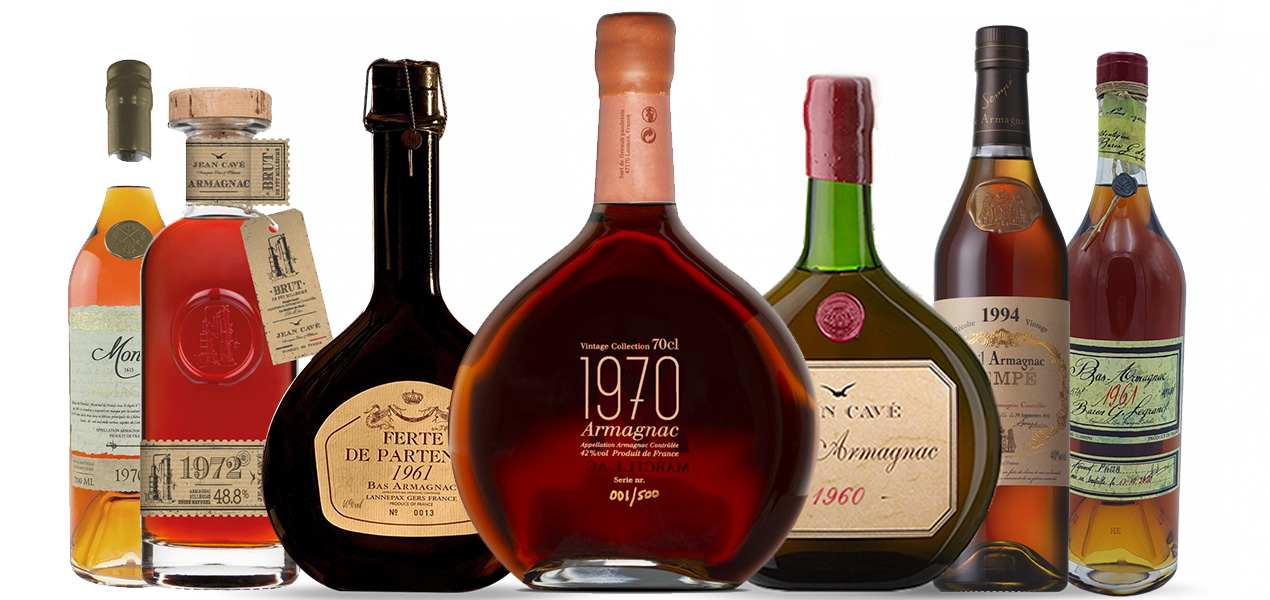
Vintage Armagnacs
The Ultimate Connoisseur's Choice
When it comes to the world of spirits, few can match the exquisite taste and complexity of a good vintage Armagnac. One of the most unique features of Armagnac is its vintage classification system. Unlike blended Armagnacs, which are made by blending eaux-de-vie from different years, vintage Armagnacs are made from a single year's harvest. This means that each vintage is a unique expression of a particular year's climate, soil, and winemaking techniques.
The best vintage Armagnac is often made from grapes grown in Bas-Armagnac, a region known for producing eaux-de-vie of exceptional quality. However, the terroir is just one of many factors that influence the quality of vintage Armagnac. To truly create an exceptional product, producers must also pay close attention to the quality of the grapes, the degree of distillation, the type and age of oak barrels used, and the length of aging in those barrels. Aeration of the barrels, storage conditions, and the occasional observation of the barrels all play a vital role in the final flavor and aroma of the Armagnac.

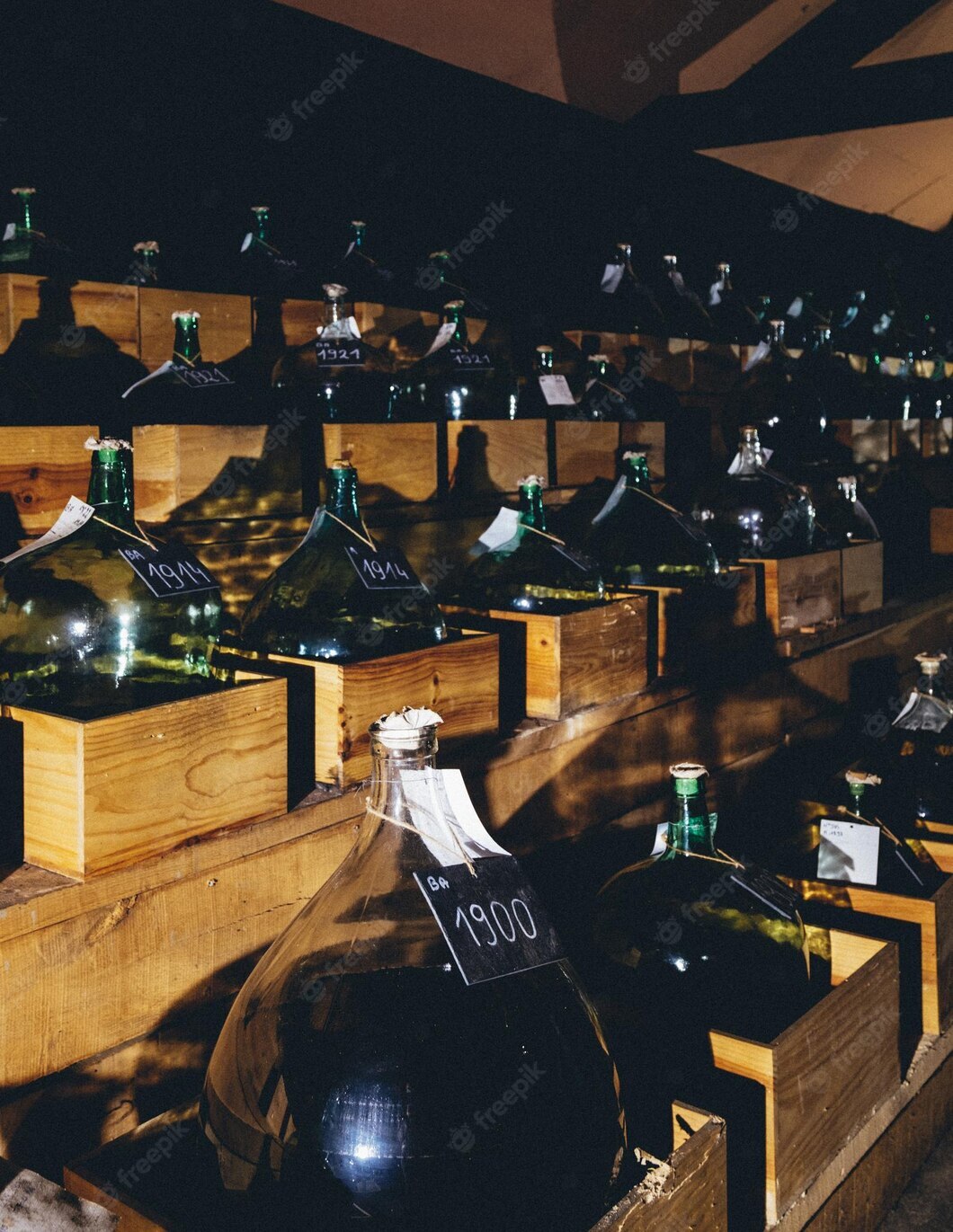
In fact, there are seven factors that have a significant impact on the quality of vintage Armagnac. These include, but are not limited to:
- Degree of distillation - the alcoholic degree to which the wine is distilled
- Type and age of oak barrels - the type and age of oak barrels used to age the Armagnac, and whether the barrel was used beforehand for other Armagnac aging, and if so for how long
- Time of aging - how much time the Armagnac actually spent in oak barrels (an Armagnac may be labeled with 1963 but was already bottled in the 1990, making this a 27 year old Armagnac, only. Once in the bottle, or glass dame jeanne, the aging process is stopped.
- Soil composition - the soil in which the grapes are grown. This has a major impact on grape and grape juice quality. In a word: terroir.
- Grape quality - the quality of the grapes harvested to produce the eaux-de-vie.
- Storage conditions - the conditions in which the barrels are stored: humid or dry cellars. Also the aeration of the barrels plays a role, meaning to periodically let air into the barrels.
- Barrel observation - last but certainly not least: the process of regularly observing the barrels to ensure consistency and quality.
All of these factors come together to create a vintage Armagnac that is truly unique and hopefully unforgettable. The resulting eau-de-vie is a reflection of the land and the people who produce it, a true work of art that can be appreciated by anyone who loves fine spirits. Concerning how vintage Armagnac is best enjoyed, there are a few key things to keep in mind.
First, it's essential to select a high-quality product from a reputable producer. Vintage Armagnacs can be quite expensive, but the investment is worth it for those who appreciate the complexity and depth of flavor that only a truly exceptional eau-de-vie can offer. Compared to other fine spirits, such as whisky, bourbon, or rum, the price to age ratio for a mature vintage Armagnac still is very interesting. Once you've selected your vintage Armagnac, it's best to enjoy it at room temperature, sipping it slowly to savor the nuanced flavors and aromas. Some connoisseurs prefer to serve vintage Armagnac with a few drops of water, which can help to open up the flavors and make them more accessible.
A vintage Armagnac should be tasted and appreciated slowly. They are not, generally speaking, spirits intended for use with cocktails or other long drinks.
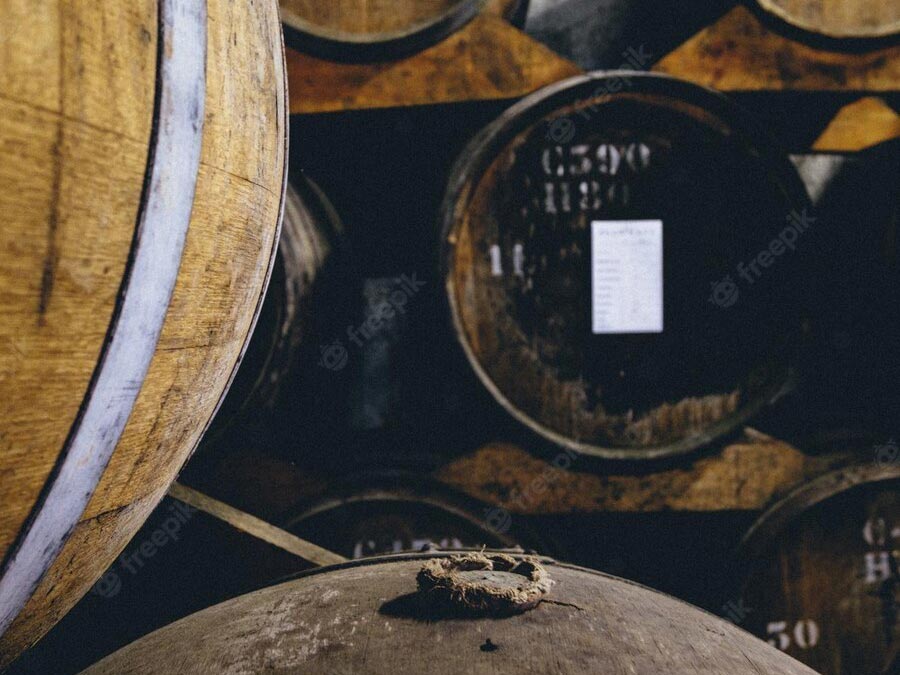
Blanche Armagnac AOC
Blanche Armagnac A.O.C (Appellation d’Origine Contrôlée), is a traditional eau-de-vie and relatively new age classification of Armagnac that was given official authorization in 2005.
It came about from a desire driven by the producers that were used to keeping back a part of their freshly distilled eau-de-vie for their personal reserves.
Blanche Armagnac follows the same production methods as Armagnac, only rather than retaining an amber coloring, it is a white spirit full of freshness.
Specific methods of vinification and selection of distillate ensure its particularly floral and fruity aromas.
So, in order to preserve its aromas and its crystal clear appearance, it is put into inert containers.
Finally and uniquely in the world of AOC, the eaux-de-vie is quality controlled by batch, to ensure its quality before commercialisation, making Blanche Armagnac AOC a technical product adhering to strict standards of quality.
What does Armagnac taste like?
The eaux-de-vie has a distinct aroma of dried fruits, spices and a hint of smoke, with a smooth and velvety body. Armagnac is a spirit unlike any other, with its unique flavour profile sure to captivate your palate.

photo copyright by L'Encantada
With an aromatic palette capable of revealing a hundred or so flavors, Armagnac is truly diverse in terms of its flavor profile, as it is during the maturation process in oak that its aromatic evolution occurs. Young Armagnac is warm and has a floral and fruity bouquet, sometimes even vegetal.
Older Armagnacs gain texture and retain aromas of pastry, then candied fruit, with woody and spicy notes. Finally, dried fruit and rancio are the tasting characteristics of Armagnacs that are always over 20 years old, meanwhile, notes of leather, fur, truffles, gunflint, Madeira and sherry are aromas that connoisseurs in particular value highly.
How to enjoy Armagnac
Armagnac is often enjoyed as a “digestif” after-dinner drink, and is most often served neat or on the rocks.
It can also be used in cocktails or as a component in cooking and baking recipes.
With its unique and flavorful aromatic profile, Armagnac is favored by mixologists and chefs around the world. The rich, complex flavor and long aging process make it a truly special and memorable drink to boost creative drink concoctions and exquisite dishes.


photo copyright by L'Encantada
Armagnac bottles in our online shop
Liquids based on Armagnac or Eau de Vie from the Gascogne
Armagnac is not only enjoyed by itself but also serves as a base for various other exquisite drinks and food products.
Welcome to the wonderful world of Armagnac and its delicious armagnac-based products.
Armagnac, a brandy distilled in southwestern France, is not only enjoyed by itself but also serves as a base for various other exquisite drinks and food products. Here are some of the fantastic products based on Armagnac that you may want to explore.
Firstly, let's talk about the refreshing Blanche Armagnac, a clear eau-de-vie that is usually made with Folle Blanche, Ugni Blanc, or Colombard. It is best served ice cold which enhances the texture of this young spirit. You can enjoy it as a palate cleanser between courses or pair it with smoked salmon, delicate charcuterie, or caviar. Another popular Armagnac-based product is Floc de Gascogne, a sweet aperitif made by combining three parts of unfermented grape juice with one part of armagnac aged for a minimum of one year.
Floc is to Armagnac as Pineau des Charentes is to Cognac. Floc comes in both red and white versions and is served chilled as a refreshing aperitif with nuts, foie gras, cheese, or fruit salad.
A local aperitif in the armagnac region is Vin de Pêche:
Homemade and typically stored in leftover bottles, it offers a slightly bitter taste and is an ideal choice before a meal. Made by steeping peach leaves in Armagnac for a week, straining the armagnac off the leaves, and mixing it with large sugar cubes, red wine, and either eau-de-vie d'Armagnac or 3 étoiles armagnac, Vin de Pêche can be bottled and left to sit in a cool spot for a week or two before serving. Alternatively, walnut leaves can be used to make a delicious vin de noix.


If you have a sweet tooth, you must try the Crèmes a l'Armagnac, a delicious liqueur made with eau-de-vie d'Armagnac as the alcohol base. Armagnac producers create the Crème de cassis and Crème de mûres (blackberry), which can be a lovely addition to white wine, sparkling wine, and even sorbet.
La Belle Sandrine, a 32 proof product made from a mixture of passion fruit juice and armagnac, was created by the Cognac-owned firm Gerland in Villeneuve-de-Marsan.
Similar in taste to Alizé, the liqueur offers a unique flavor and has gained a loyal following.
Bagheero, another Armagnac-based liqueur, was created by the Sempé firm. The blend of passion fruit juice and armagnac gives it a tropical punch flavor, and it has become a popular choice for those seeking a unique, fruity cocktail ingredient.
La Grande Passion, a liqueur made from armagnac, was created by Bordeaux négociant Michel Roux in the early 1980s.
With a unique flavor reminiscent of peach, the liqueur was marketed in the United States as a competitor to Cointreau and Grand Marnier. Despite its initial success, sales began to dwindle, and the product was eventually packaged in a heart-shaped metal canister in a last-ditch effort to increase sales. When that strategy failed, production of La Grande Passion was discontinued.
Armagnac Cocktails and Mixed Drinks
Armagnac cocktails are a must-try for any spirit lover looking for a unique twist on classic recipes
Armagnac Soda
The Armagnac Soda is a simple yet classic cocktail that highlights the unique flavor of Armagnac. To make this cocktail, you'll need 1/3 VSOP level Armagnac and 2/3 club soda. Fill a glass with ice and pour the Armagnac over the ice. Top with the club soda and serve.
Beverly Hills
Next up is the Beverly Hills, which is a blend of sugar, bitters, and Armagnac. Begin by building this drink in a room temperature whiskey or rocks glass. Next, saturate a sugar cube with bitters, add a bar spoon of soda water and muddle to create a slightly granulated paste. Finally, add the Armagnac and ice sphere and stir gently 15-20 times.
Armagnac & Blood Orange Juice
The Armagnac with Blood Orange Juice is a refreshing and slightly tart cocktail that highlights the fruity flavors of Armagnac. To make this cocktail, you'll need 20% VSOP level Armagnac, 20% club soda, and 60% blood orange juice. Combine all the ingredients in a glass with ice and serve chilled.
Tom Collins
For a refreshing summer cocktail, try the Tom Collins. Combine 45ml of Armagnac, 40ml of lemon juice, and 20ml of simple syrup in a shaker with ice. Strain into a highball glass and fill it with club soda to taste. Garnish with a lemon wheel and a brandied cherry.
Sidecar
The Sidecar is a classic cocktail that was introduced in the 1920s at the Paris Ritz. It pairs nicely with lemon juice and triple sec. To make this cocktail, shake 40 ml (1¼ Oz) Armagnac, 30 ml (1 Oz) Triple Sec / Cointreau, 15 ml (½ Oz) Lemon Juice, and 1 Lemon Peel with ice. Strain the mixture into a well-chilled coupe glass and add a lemon twist for garnish.
Plantignac
Plantignac is a fruity and refreshing cocktail made with Blanche (eau-de-vie), lemon juice, strawberry syrup, guava juice, pineapple juice, Floc de Gascogne, and a pinch of cinnamon. To make this cocktail, combine all the ingredients in a shaker with ice and shake well. Strain into a glass filled with ice and garnish with a slice of fruit.
French Negroni
For a unique twist on the classic Negroni, try the French Negroni. Combine 30ml of Armagnac, 30ml of Campari, and 30ml of vermouth in a tumbler glass and stir with ice until well-chilled. Garnish with an orange peel.
After all
For a dessert cocktail, try the After All. Shake 0.5 oz of fresh lemon juice, 1 oz of peach liqueur, and 1.5 oz of Armagnac with ice and strain into a chilled coupe glass.
Vieux Carré
The Vieux Carré is a New Orleans classic that combines gourmand and rounded flavors. Armagnac adds personality to this creation. To make this cocktail, simply combine 40 ml (1¼ Oz) Armagnac, 40 ml (1¼ Oz) Rye Whiskey, 40 ml (1¼ Oz) Sweet Vermouth, 1 Tsp Bénédictine, 2 Dashes Peychaud’s Bitters, and 2 Dashes Angostura Bitters in a tumbler glass. Stir well before adding ice.
D'Artagnan Cocktail
For a champagne cocktail, try the d'Artagnan Cocktail. Shake 15ml of Armagnac, 15ml of Grand Marnier, 60ml of orange juice, and 7ml of simple syrup with ice and strain into a chilled coupe glass. Top up with Brut Champagne to taste.
Brandy Smash
If you want to showcase the full flavor of Armagnac, try the Brandy Smash. Shake 50ml of Armagnac, 20ml of sugar syrup, 4 mint leaves, and 2 lemon wedges with ice and strain into a tumbler filled with crushed ice. Garnish with mint leaves and lemon wedges.
Corpse Reviver N°1
The Corpse Reviver N°1 is a pre-prohibition classic cocktail that was supposedly a hangover cure. It consists of 30 ml (1 Oz) Armagnac, 30 ml (1 Oz) Calvados, 15 ml (½ Oz) Sweet Vermouth, and Orange Peel. Simply stir the ingredients with ice and strain into a chilled cocktail glass. Garnish with an orange peel.
Continental Sour
The Continental Sour is a smooth and fruity cocktail that's a twist on the New York Sour. It uses Armagnac instead of whiskey. To make this cocktail, shake 40 ml (1¼ Oz) Armagnac, 20 ml (¾ Oz) egg white, 20 ml (¾ Oz) sugar syrup, 15 ml (½ Oz) lemon juice, and 10 ml (¼ Oz) red wine with ice. Strain the mixture into an ice-filled glass and gently pour the red wine so it separates at the top.
Armagnac Sour
The Armagnac Sour is a classic sour cocktail that is refreshing and slightly sweet with a hint of Armagnac's unique flavor. To make this cocktail, you'll need 1/4 VSOP level Armagnac, the juice of half a lemon, two dashes of sugar syrup, and 3/4 club soda. Add ice to a shaker and combine all the ingredients except the club soda. Shake well and strain into a glass filled with ice. Top with club soda and serve.
Tignac
Tignac is a simple yet delicious cocktail made with Blanche (eau-de-vie), sugar syrup, lime juice, and ice cubes. To make this cocktail, add the Armagnac, sugar syrup, and lime juice to a glass filled with ice cubes. Stir well and serve. Whichever Armagnac cocktail you choose to make, the rich, fruity flavor of this brandy is sure to add a unique twist to any recipe. So why not try one today and experience the smooth and complex flavors of Armagnac!
What does Armagnac pair with?
From food pairing to Cigars
Food pairing
When it comes to finding the perfect food pairing for Armagnac, the options are endless. The unique complexity of this distinct French brandy makes it a versatile and exciting spirit to pair with a range of foods, from seafood to charcuterie, fruit to cheese, and even coffee. One excellent pairing for Armagnac is seafood. A light and fruity Armagnac, with smooth woody notes, complements fish and seafood particularly well. Some prefer their Armagnac chilled with such pairing. Caviar and Armagnac is also a match made in heaven, especially when the Armagnac has a fruit and vanilla profile.
Older Vintage Armagnacs work wonderfully with well-cooked lobster and spices. Oysters, with their distinct flavor profile of cucumber, melon, and sea salt, pair well with a crisp and mineral Blanche Armagnac. When it comes to meat and charcuterie, Armagnac is the perfect accompaniment to help cut through the fat. A long-aged Armagnac pairs excellently with aromatic meats, such as Peking duck, pigeon, or mature beef. Dried ham, such as Bayonne ham or Parma ham, pairs wonderfully with Armagnac, and is an excellent option as an aperitif.
For vegetarians, the XO Armagnac pairs well with fruits and vegetables that have a variety of flavors, from sweetness to bitterness. Shiitake mushrooms are a pleasant surprise with Armagnac, as their umami flavor notes create a delicious and unexpected pairing. Carrot puree is a versatile and universal accompaniment to Armagnac, complementing the brandy's distinct flavor profile.


One of the most surprising pairings for Armagnac is coffee. The unique aging process of Armagnac, with notes of wood, grilled, toasted, smoked, coffee, and cocoa, pairs perfectly with the aromas found in coffee.
An old Armagnac with delicate aromas perfectly complements a delicate Kenyan coffee, while a young and vibrant Armagnac is the perfect match for a powerful Ethiopian coffee. Lastly, it's worth mentioning the classic pairing of Armagnac with cheese.
Young and fruity Armagnacs pair excellently with mild cheeses, while the older, more woody Armagnacs produce harmonious matches with mature cheeses. Roquefort cheese complements the sweet vanilla notes of Armagnac, and creates an excellent contrast with its typical salty and prickly character. Mature comté and goudas function perfectly well as cheese pairings too.
While there are firmly set rules, a little experimentation, together with a daring attitude, can lead to some wonderful pairings.
Cigars and Armagnac
Armagnac and Cigars are a perfect pairing for those looking for a luxurious experience. This natural pairing has been enjoyed by cigar smokers in France for many years and has now made its way onto the international scene. When it comes to pairing cigars with Armagnac, the type of cigar is an essential factor to consider.
Within the world of tobacco, cigars are typically divided into three different categories of potency: gentle, moderate, and vigorous.
Mild cigars are known for their velvety and smooth taste, and possess a subdued flavor profile that is comfortable on the tongue. Examples of mild cigars include Macanudo, La Flor Domenicana, Royal Jamaican, and Majestic.
Medium-bodied cigars, on the other hand, have a bit more intricacy and flavor than their mild counterparts, exhibiting a balance of potency and subtlety. These cigars may display elements of spiciness or woody aromas, without being too overpowering. Examples of medium-bodied cigars include Hamilton, Gloria Cubana, Davidoff, and Romeo y Julieta.
Potent, or vigorous, cigars are the most powerful variety of cigars, with a full-bodied and multifaceted flavor profile that may be overwhelming for some. These cigars are often characterized by strong notes of spice, leather, or wood, and are not recommended for novice cigar enthusiasts. Examples of potent cigars include Partagas, Montecristo, Cohiba, and Punch.


© L'Encantada
Armagnacs are also sorted according to their flavor profiles.
These spirits can be categorized as high-toned (aromatic), mid-toned (lively fruits), or low-toned (preserved fruits).
High-toned Armagnacs showcase aromatic notes, middle-toned armagnacs reveal lively fruit notes, and low-toned armagnacs display preserved fruit notes.
Of course, there are exceptions to these rules but generally speaking these categories hold true.
Typically, Armagnacs with fruity or sugary tones match well with cigars that feature a comparable hint of sweetness.
Opulent, full-bodied Armagnacs can pair excellently with strong cigars, while more delicate Armagnacs may pair better with moderate or mild cigars.
The objective is to achieve a harmonious balance between the flavors of the armagnac and the cigar, in order to optimize the pleasure of both. Bas-Armagnac is the most quality-oriented eau-de-vie out of the three Armagnac appellations, providing a lighter, more delicate, and fruity brandy.
Cigars tend to be produced to a certain house style, and Armagnacs can be divided into several categories, and pairing the right combination is a balancing act. Mild cigars tend to pair well with most Armagnacs, while stronger cigars run the risk of masking the more subtle nuances of an excellent Armagnac.
A blended Armagnac can make the ideal match for many cigars, but the key to a successful pairing is balance.
Strong cigars like La Gloria Cubana or Montecristo may be too overpowering for certain blended Armagnacs, but mild and medium-bodied cigars like Macanudo, Partagas, Romeo y Julieta, Hamilton, and Gloria Cubana can complement subtle nuances of blended Reserve Armagancs. In addition to Romeo Y Julieta, there are many other cigars that pair well with blended Armagnac. For example, the Macanudo, La Flor Domenicana, Royal Jamaican, and Majestic are mild cigars that complement the spirit's subtle nuances.
On the other hand, the Partagas, Montecristo, Cohiba, and Punch are strong cigars that can overpower the Armagnac's delicate flavors. It's important to keep these factors in mind when choosing a cigar to pair with Armagnac blends and to experiment with different combinations to find the perfect match for your taste.
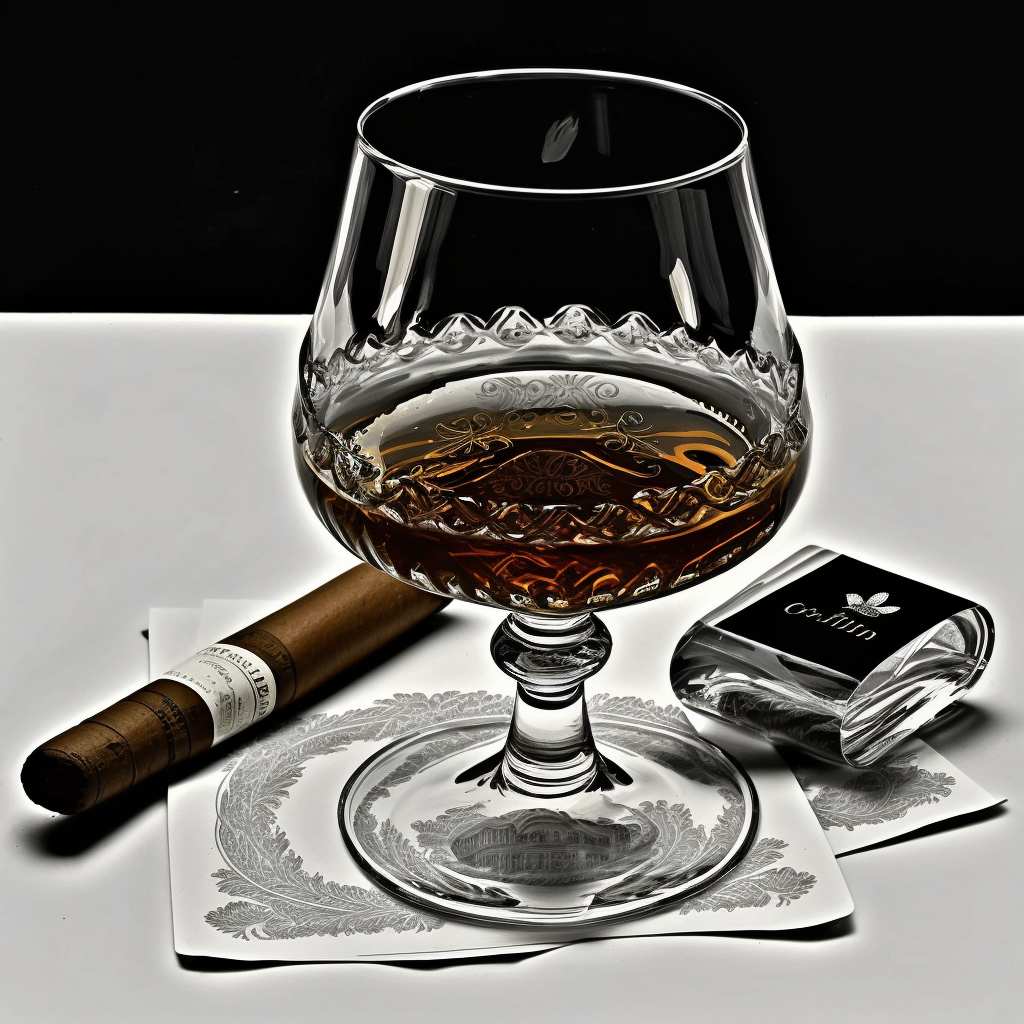
FAQs
Armagnac is produced in Gascony, a region renowned for its goose and duck specialities – and like many parts of France, priding itself on its seasonal way of life and living off the land.
Armagnac is made in a three-step process. First, the grapes are harvested and pressed to extract the juice, which is then fermented for two to three weeks. Once the fermentation process is complete, the wine is distilled in an alambic still to create the eaux-de-vie. Finally, the eaux-de-vie is aged in oak barrels for a minimum of two years, resulting in the finished Armagnac.
Armagnac is a type of brandy that is produced in the Armagnac region of France. It is made from distilled wine made from grapes such as Ugni Blanc, Colombard, Baco, and Folle Blanche. Armagnac is aged in oak barrels for a minimum of one year, but many producers age their Armagnac for much longer. The longer the Armagnac is aged, the more complex and flavorful it becomes. Armagnac is often compared to Cognac, but it has its own unique flavor profile.
There are a few different ways to drink Armagnac, depending on your personal preference. Some people enjoy it neat, sipping it slowly to savor the flavors. Others prefer to add a splash of water, which can help to open up the aromas and flavors. Armagnac can also be used in cocktails, such as a classic Sidecar or a French Connection. When serving Armagnac, it is typically served in a snifter or tulip-shaped glass to allow the aromas to develop.
Armagnac has a unique flavor profile that is often described as being more rustic and earthy than Cognac. It has notes of dried fruit, oak, vanilla, and spice, and can be sweet or dry depending on the age and type. Younger Armagnacs tend to be more fruity and floral, while older Armagnacs develop more complex flavors such as leather, tobacco, and chocolate. Armagnac is a complex and nuanced spirit that is best enjoyed slowly and savored.
Bas Armagnac is a subregion of the Armagnac region in France, located in the southern part of Gascony. Bas-Armagnac is known for producing high-quality Armagnac with a delicate and fruity flavor profile. The soil in this region is rich in limestone, which helps to produce grapes with a high acidity level that is ideal for Armagnac production. Bas-Armagnac is known for its terroir-driven Armagnacs, which are often aged for a long time in oak barrels. These Armagnacs are complex and nuanced, with flavors that are unique to the Bas-Armagnac region.






































